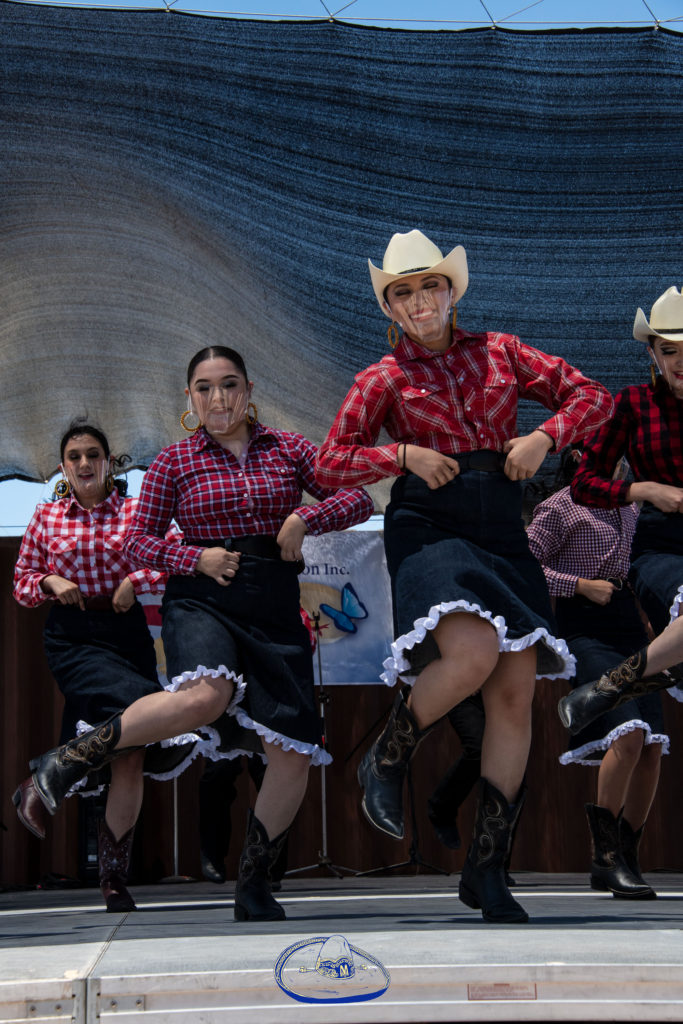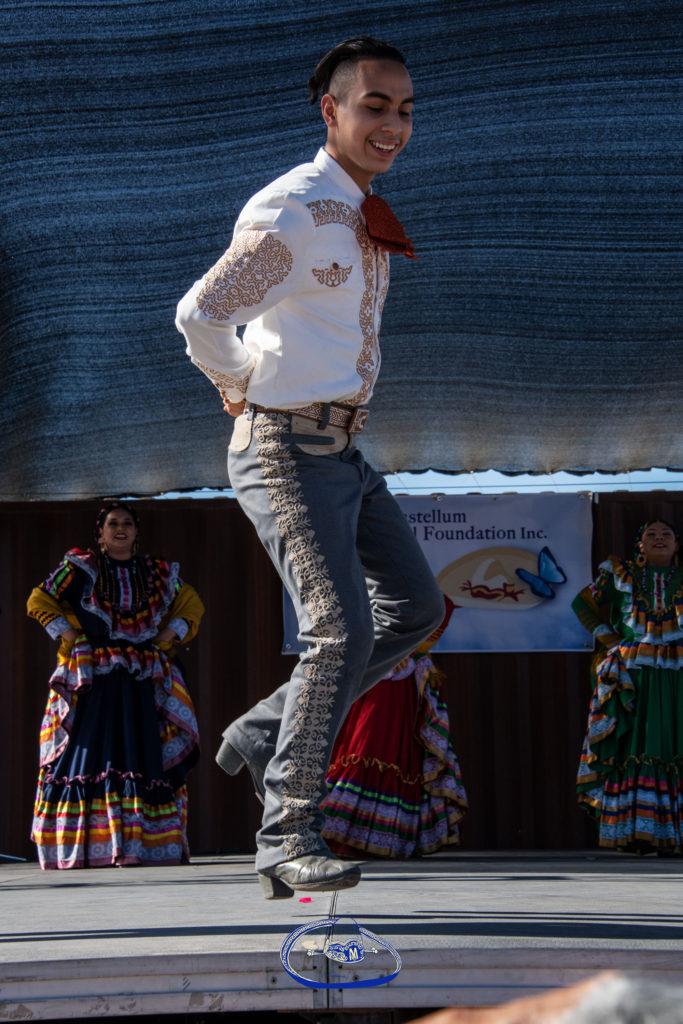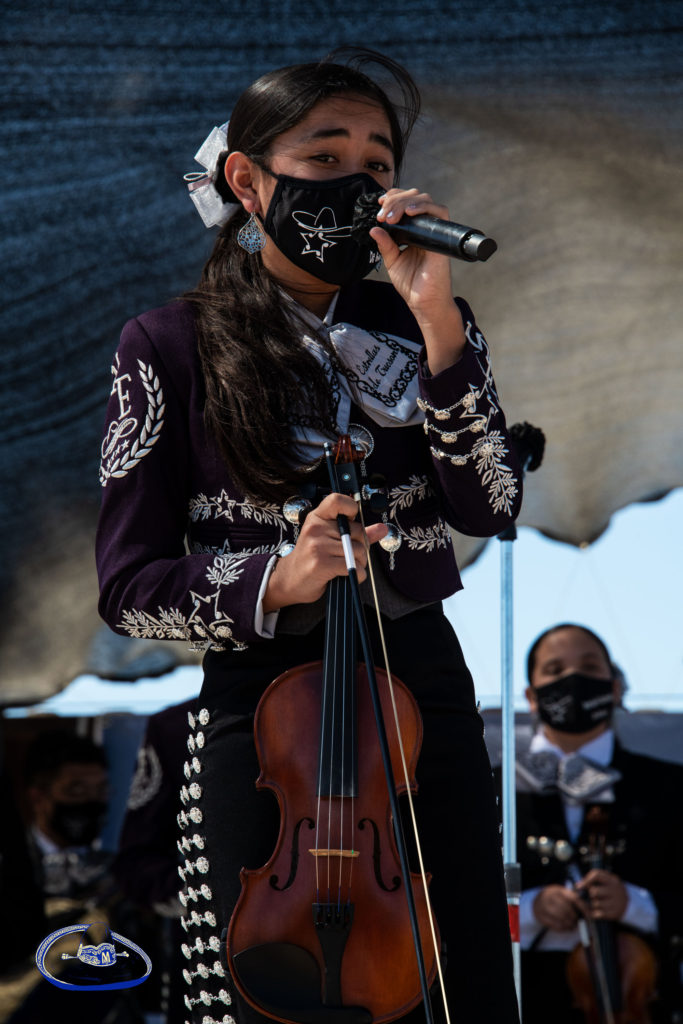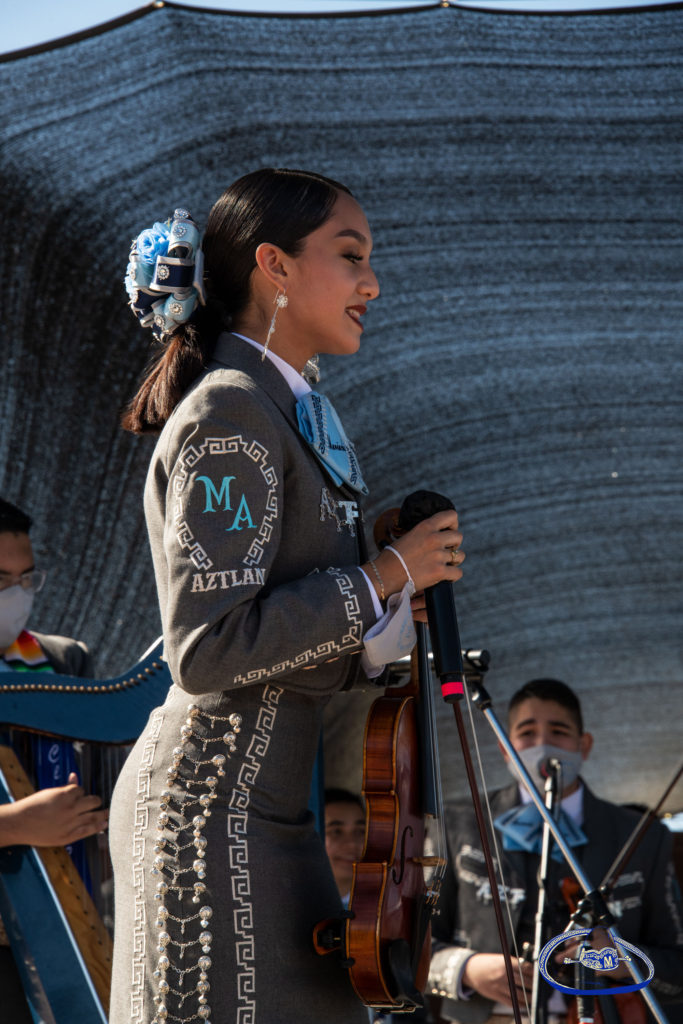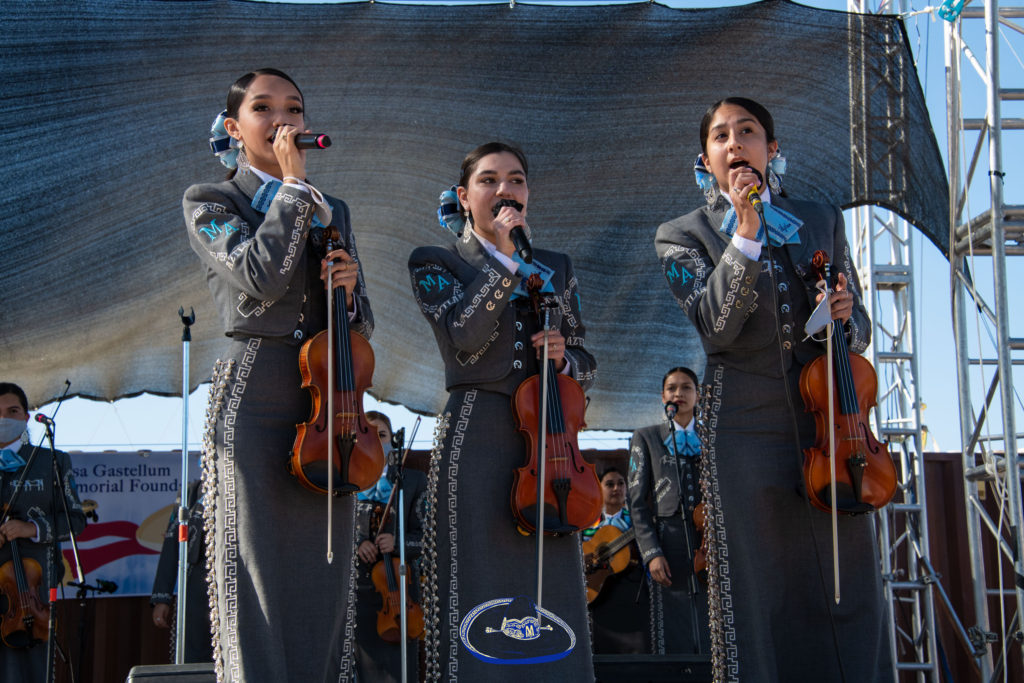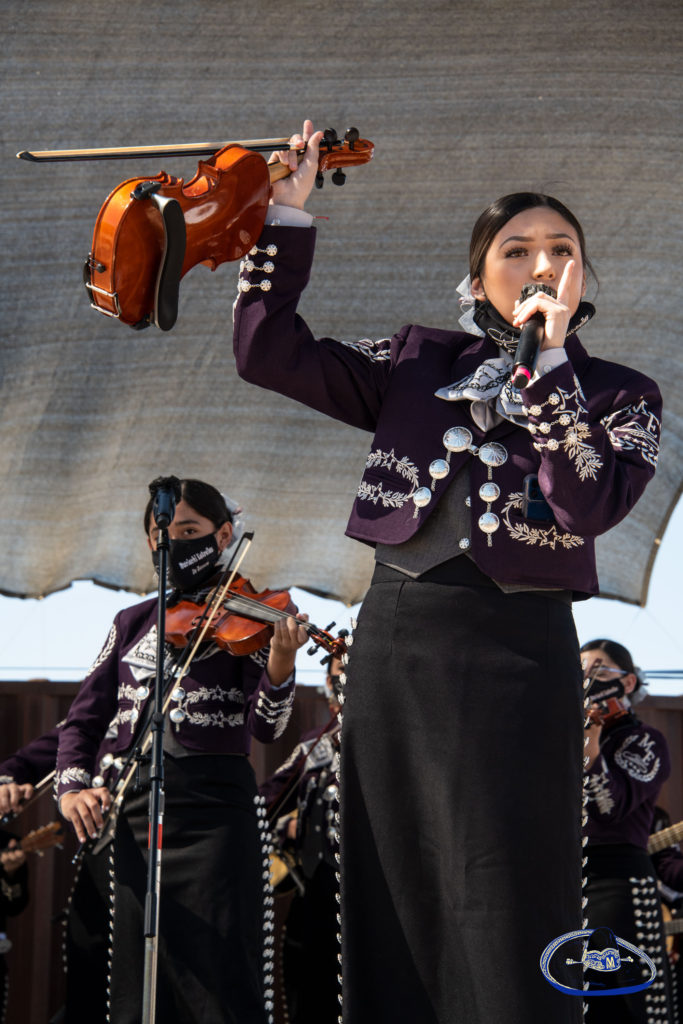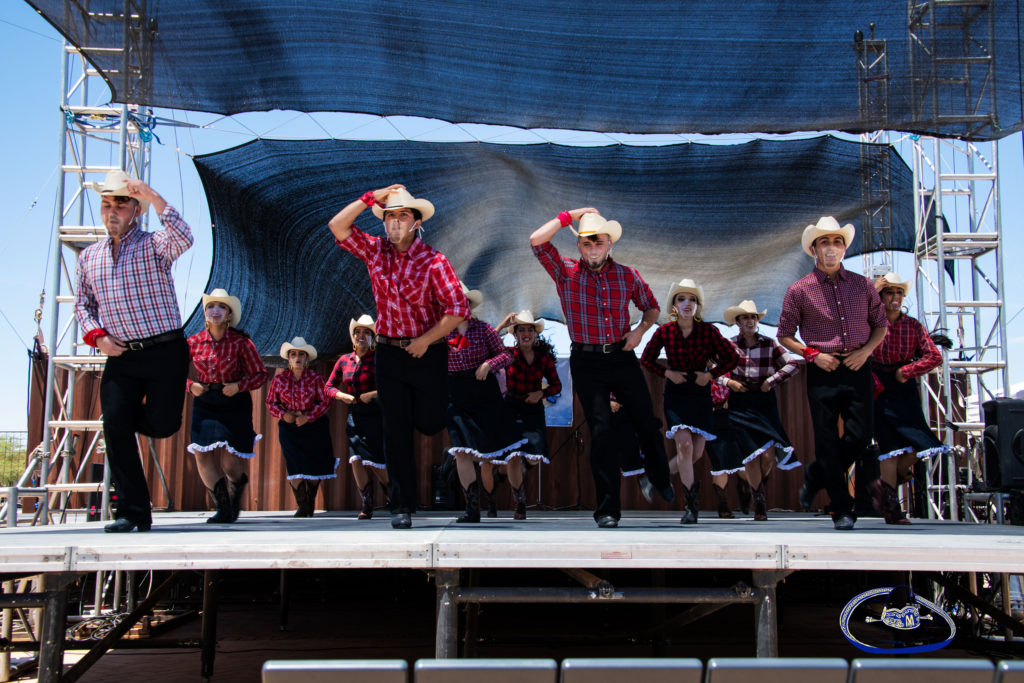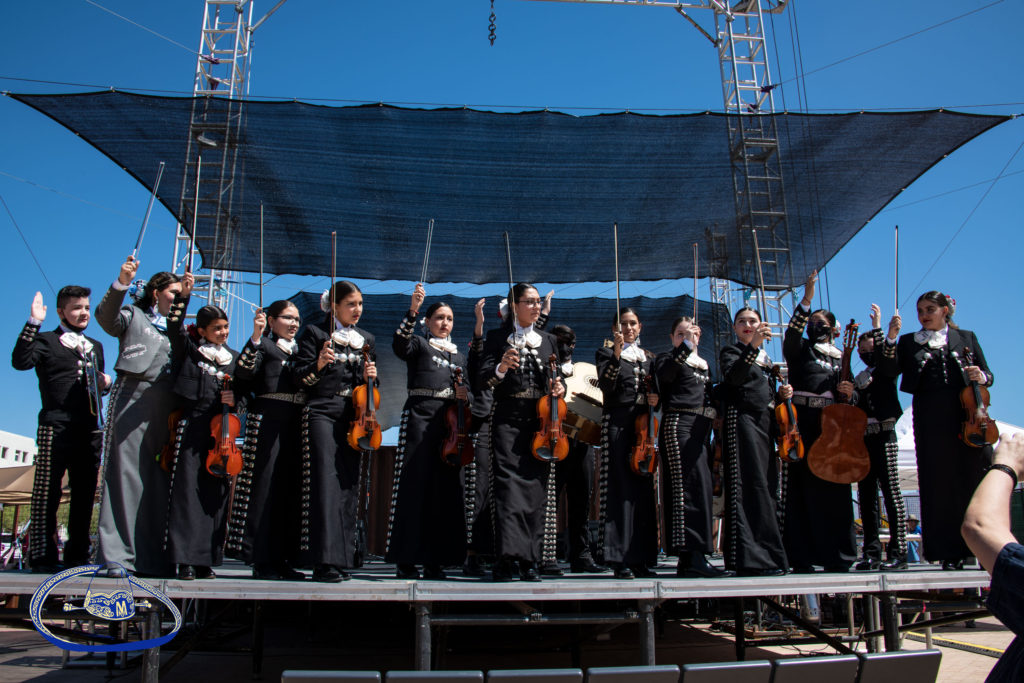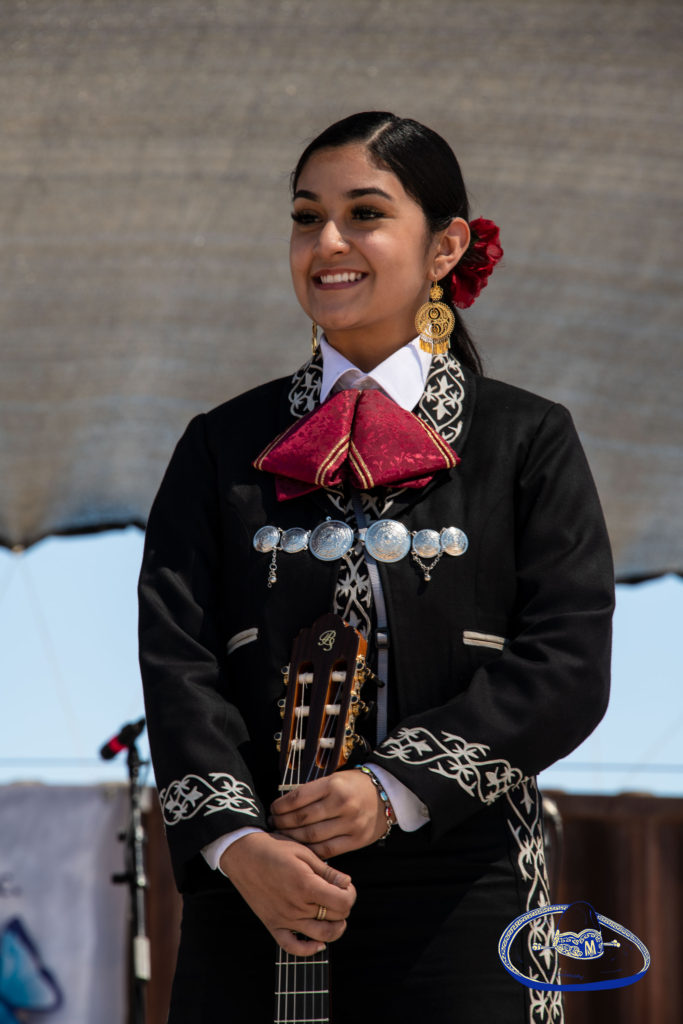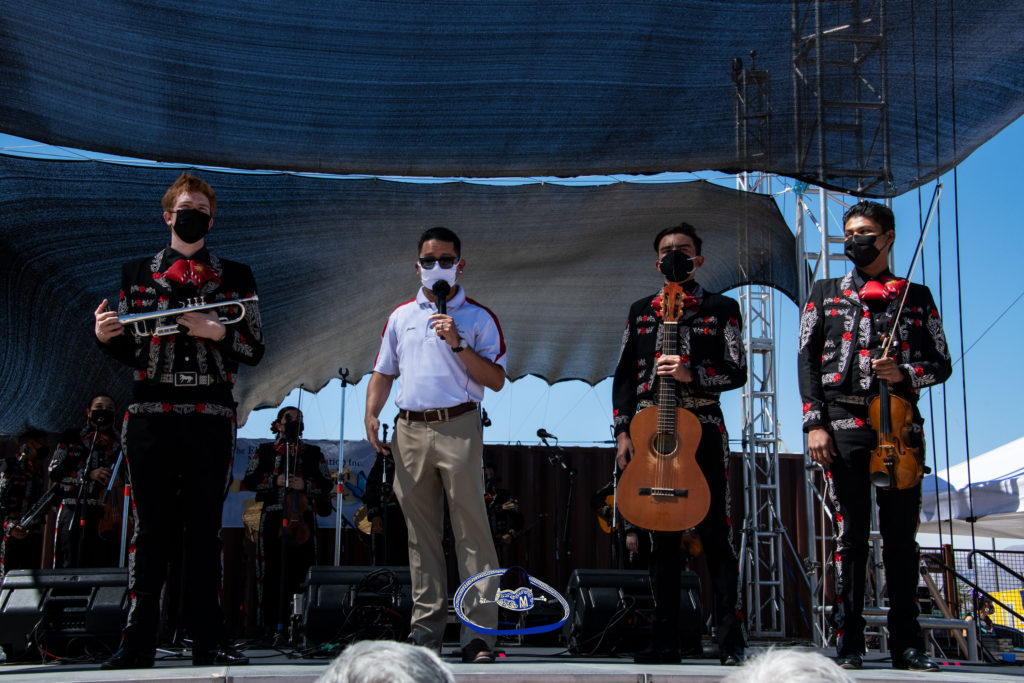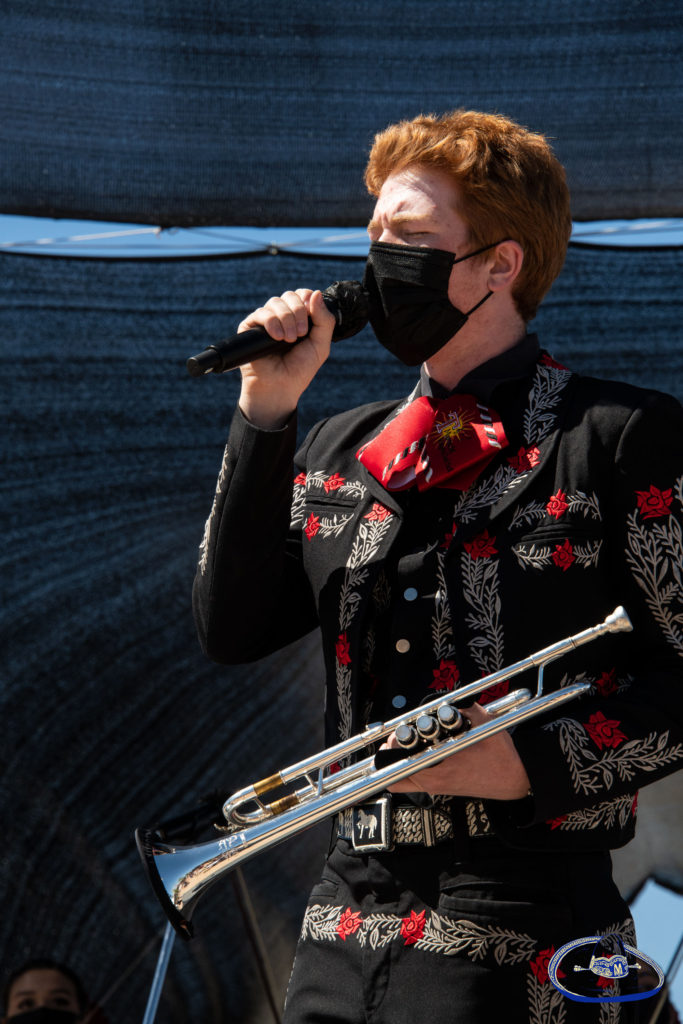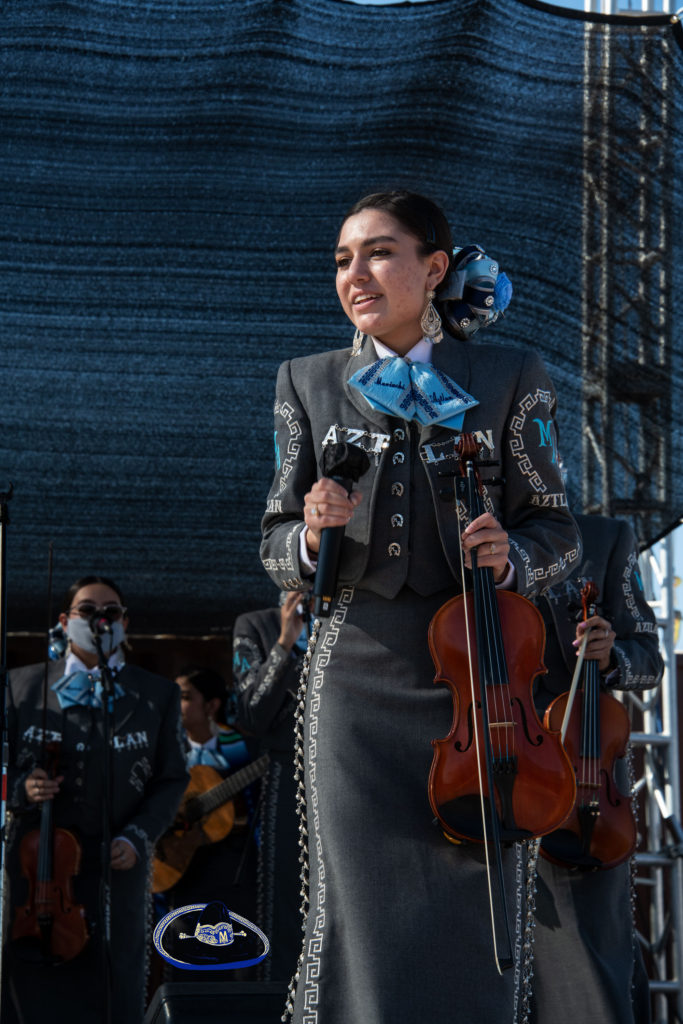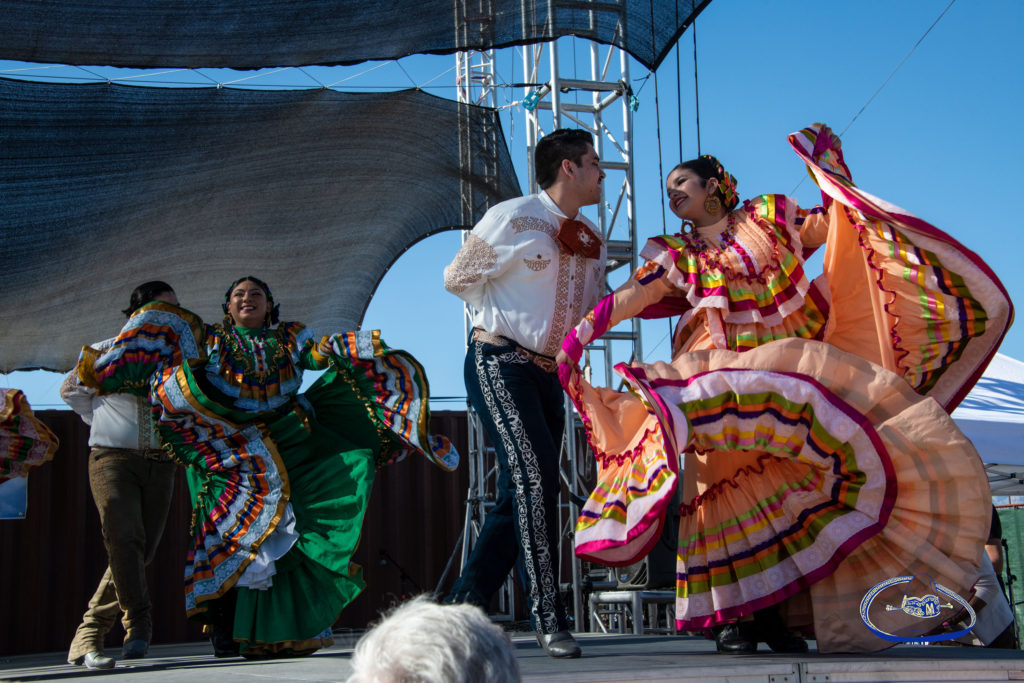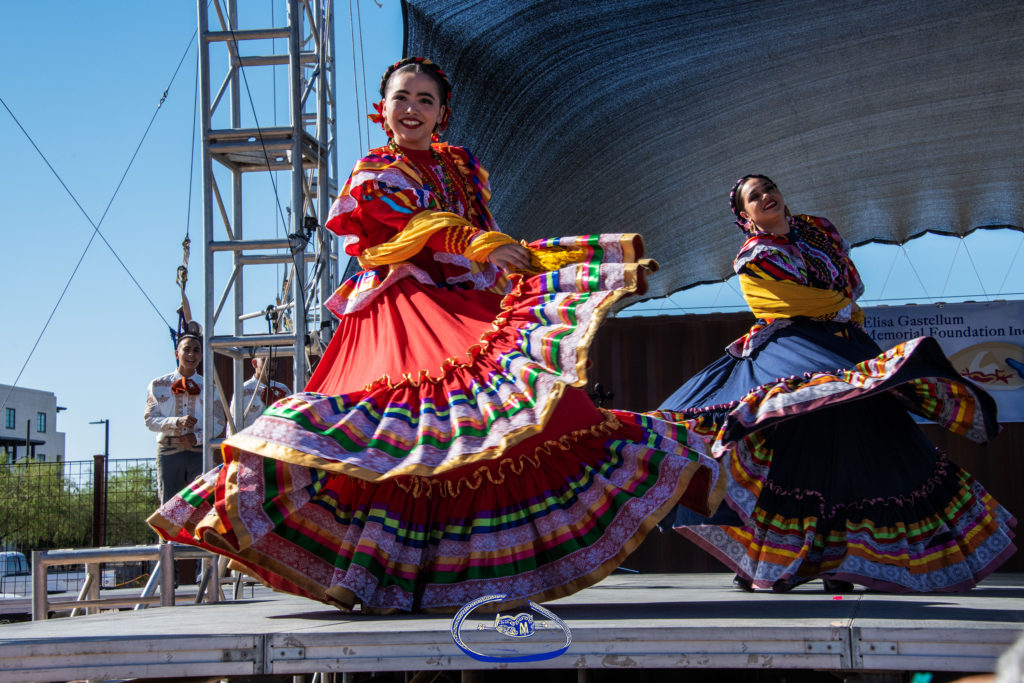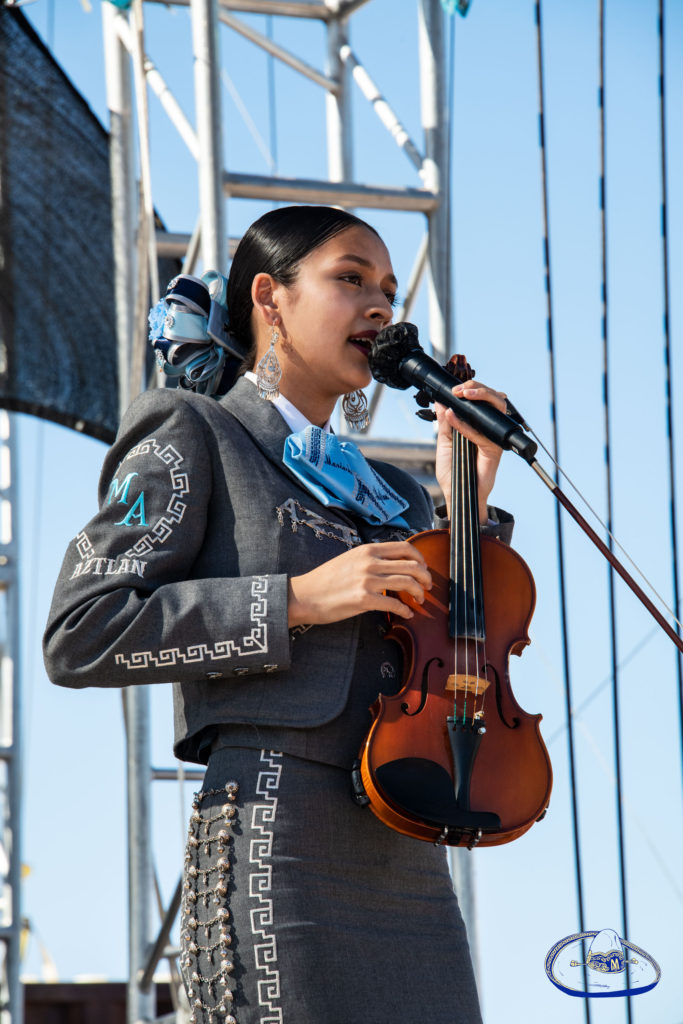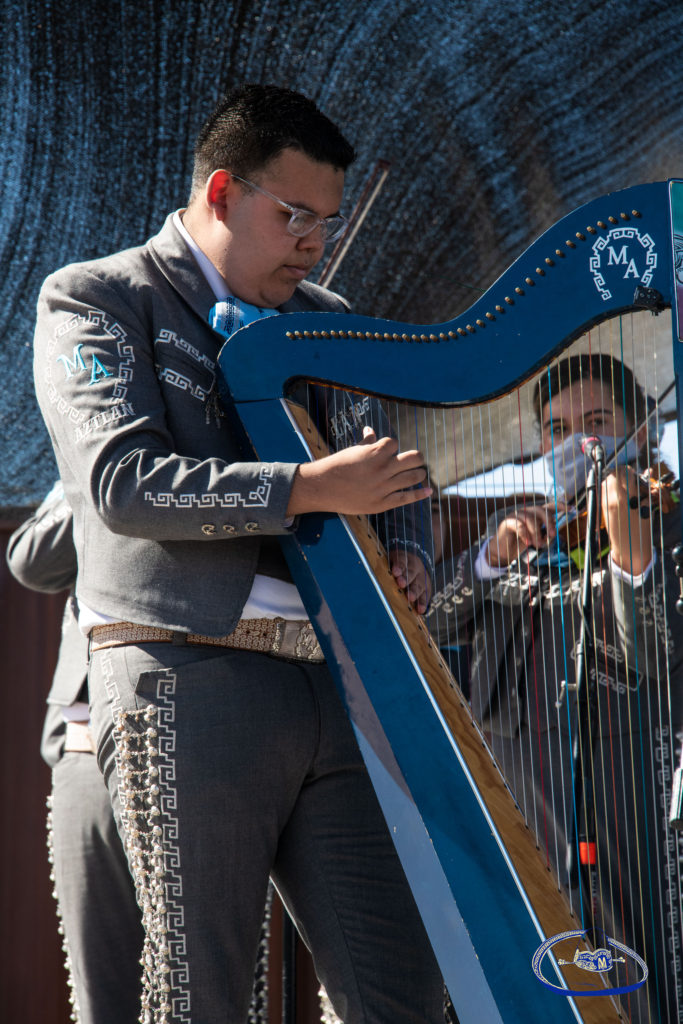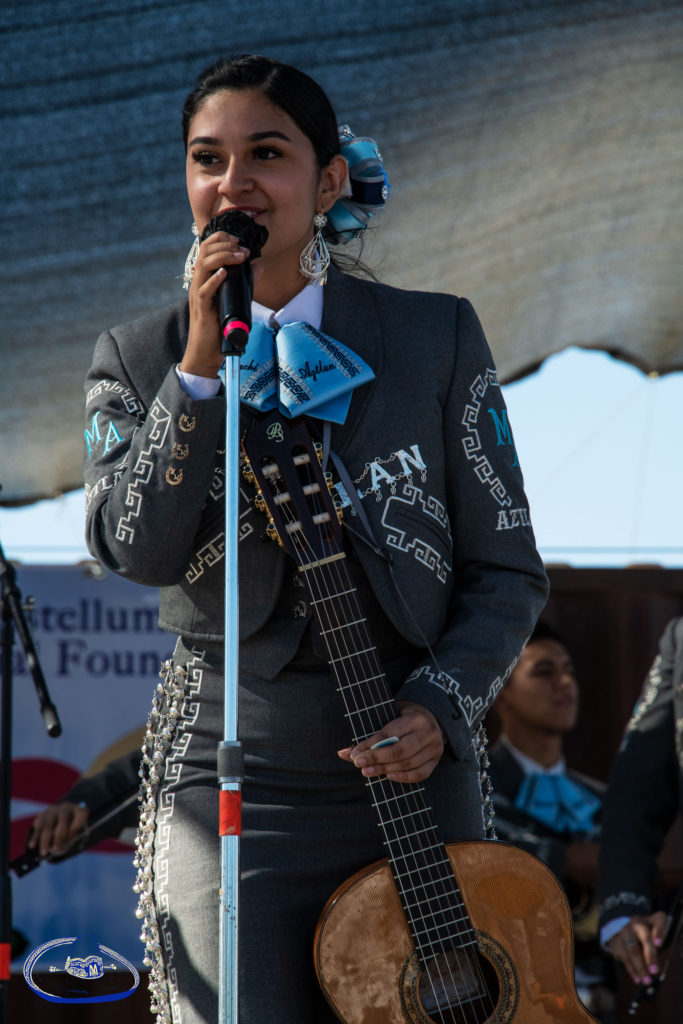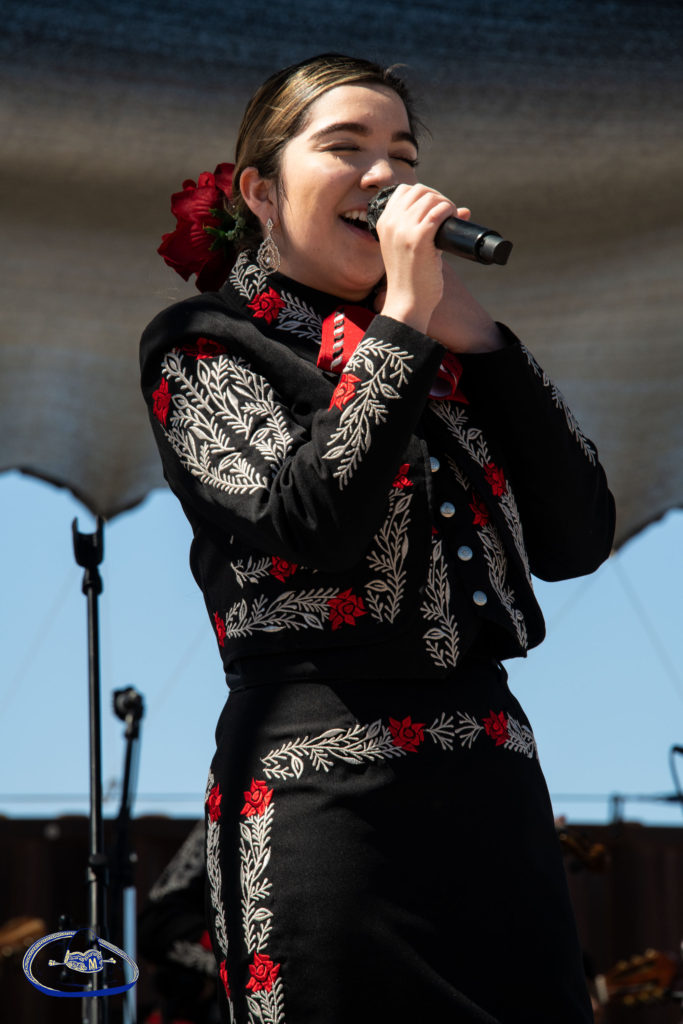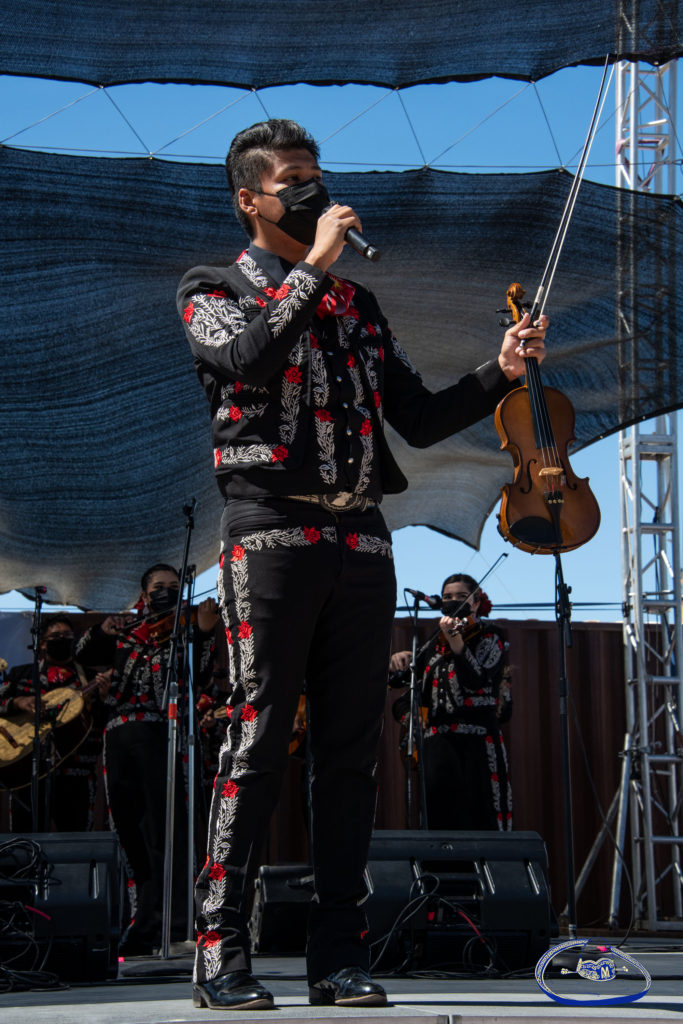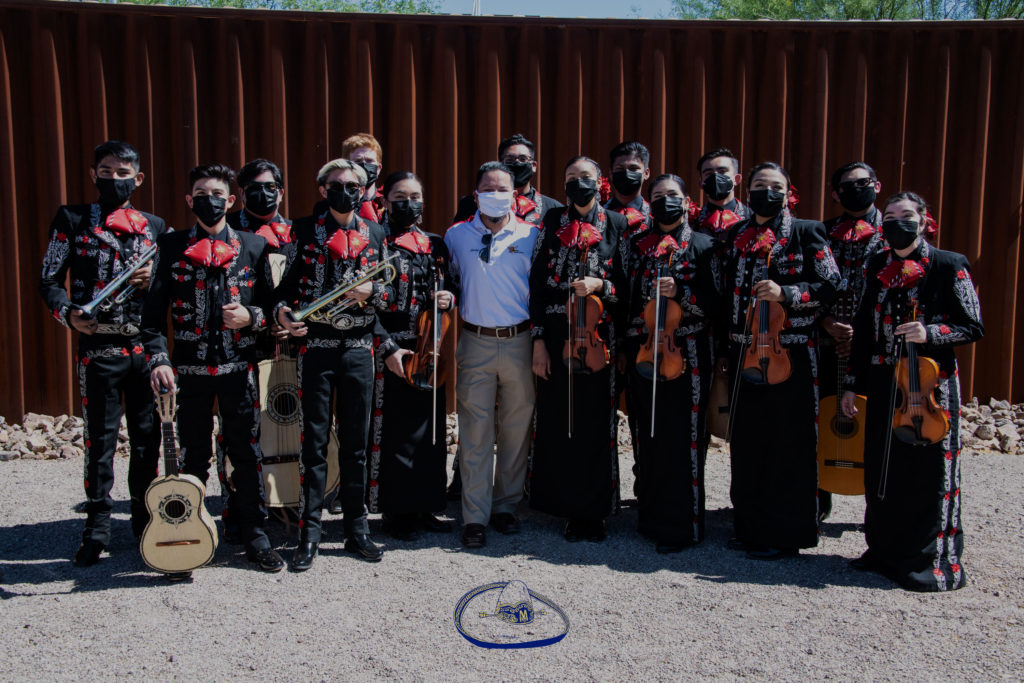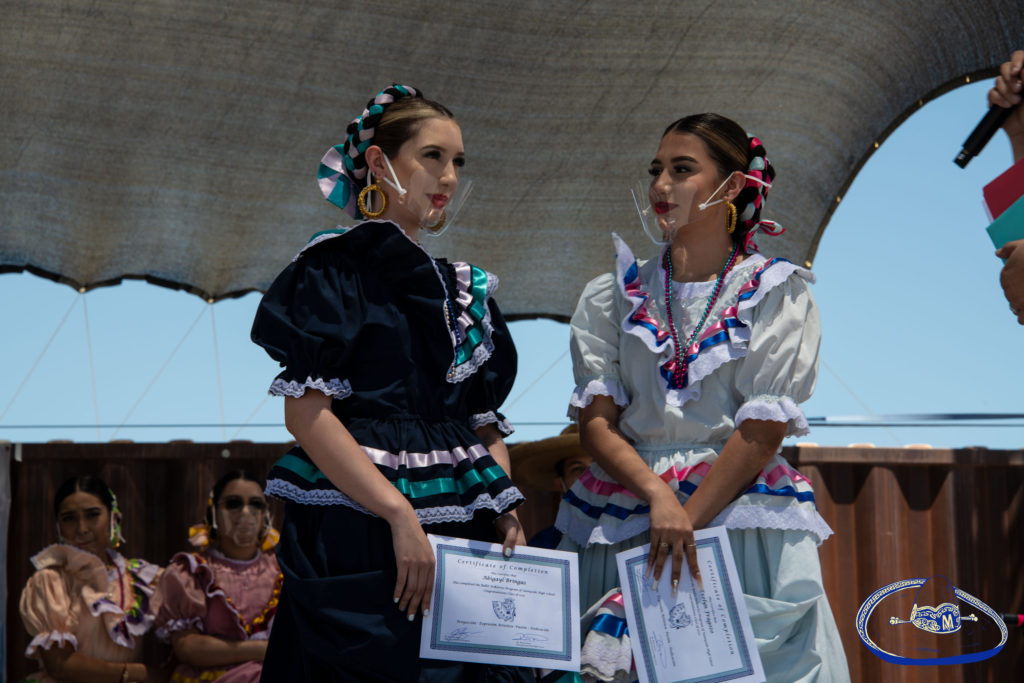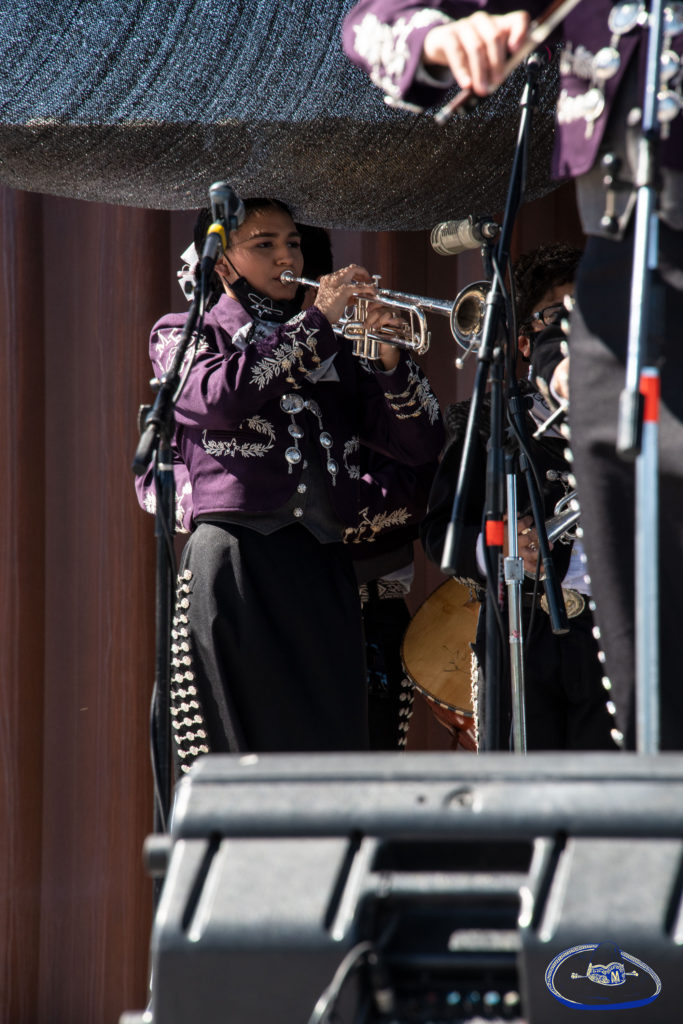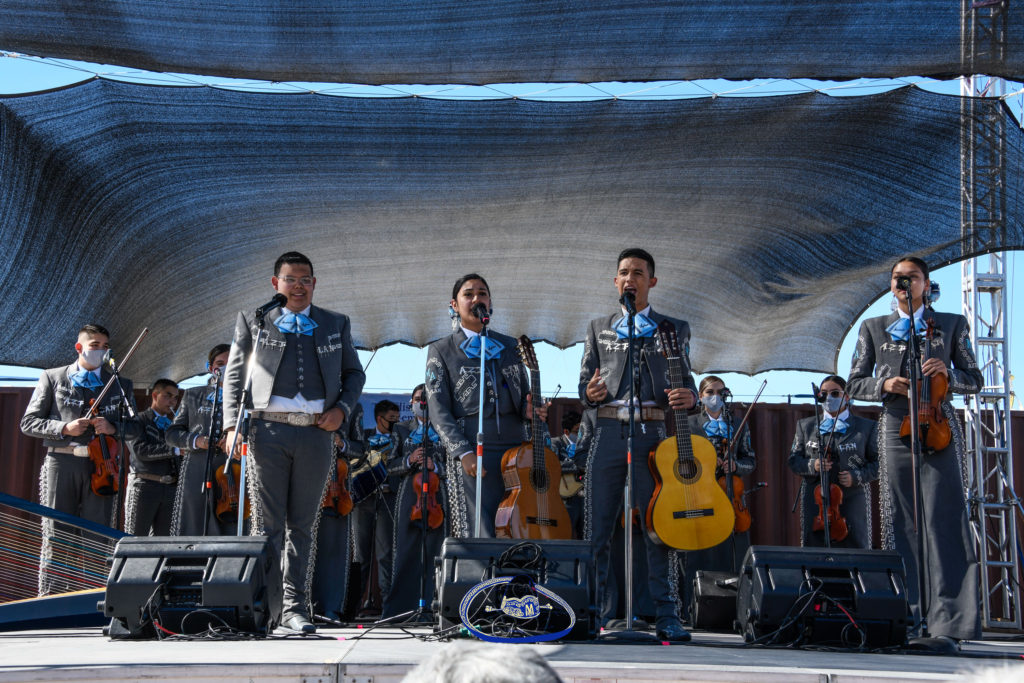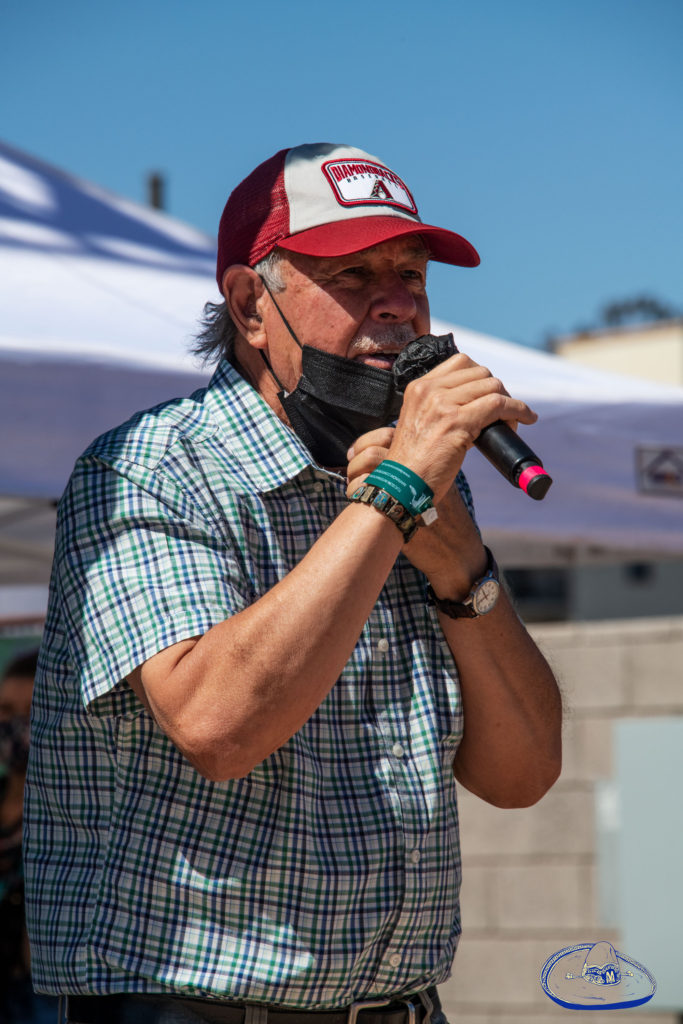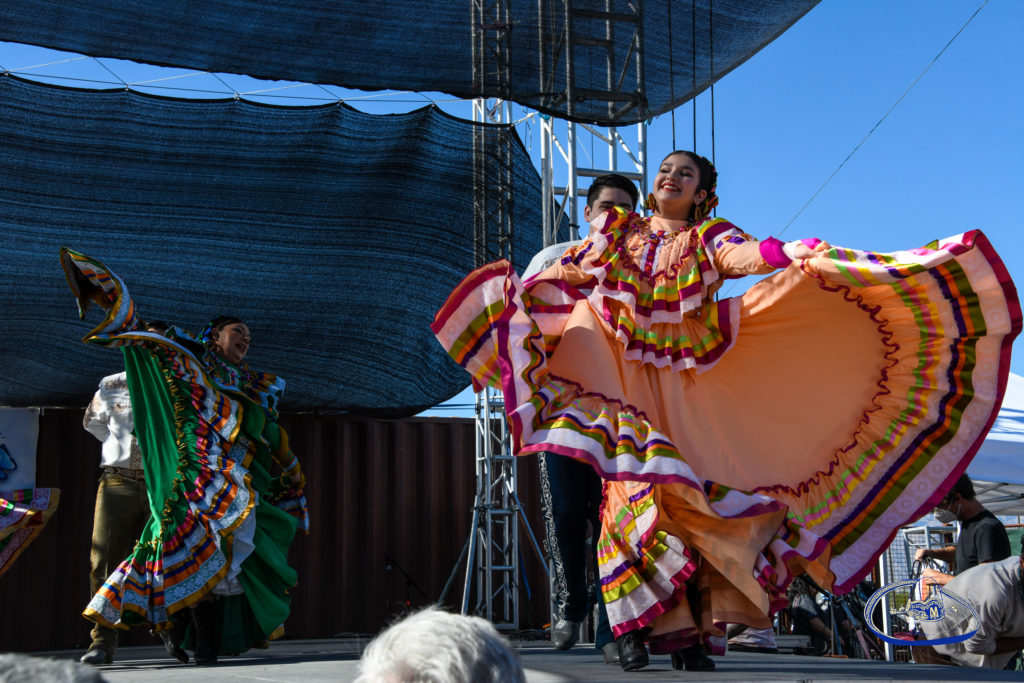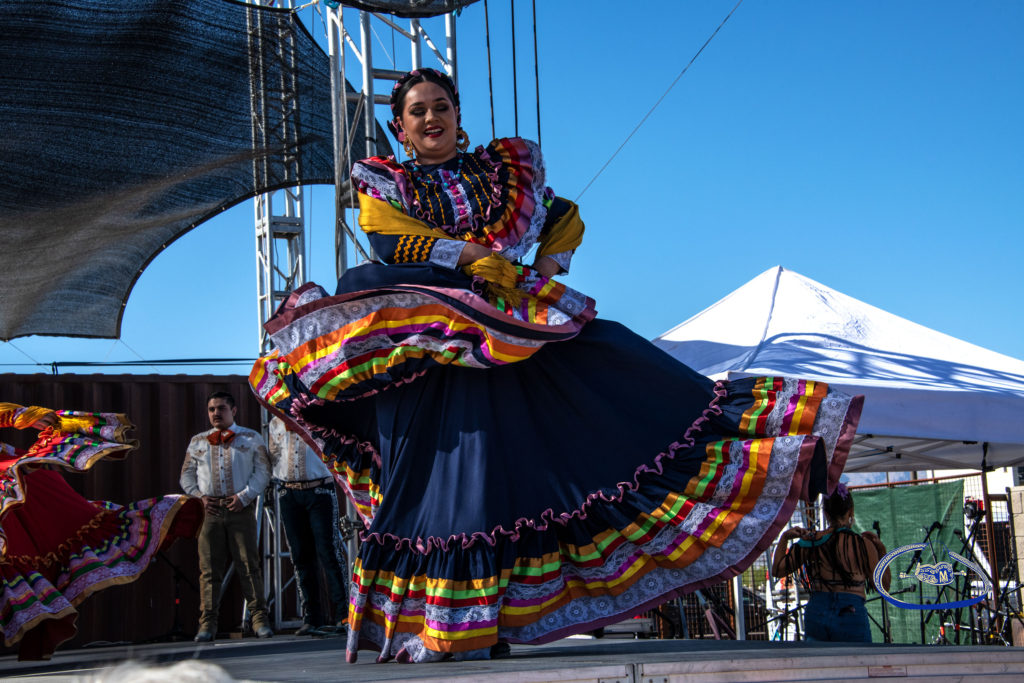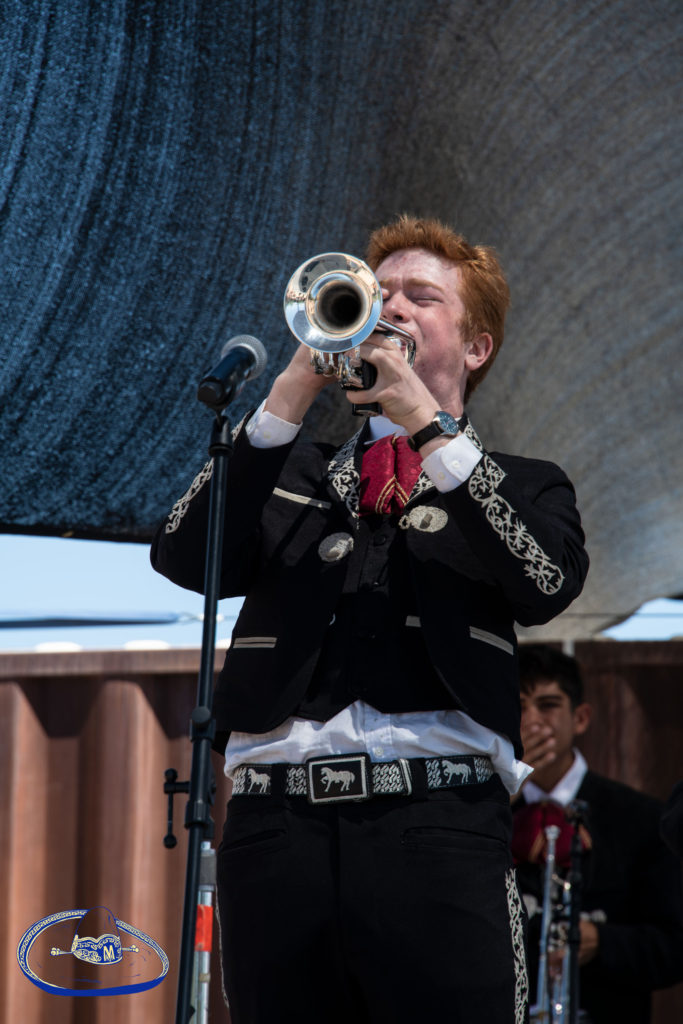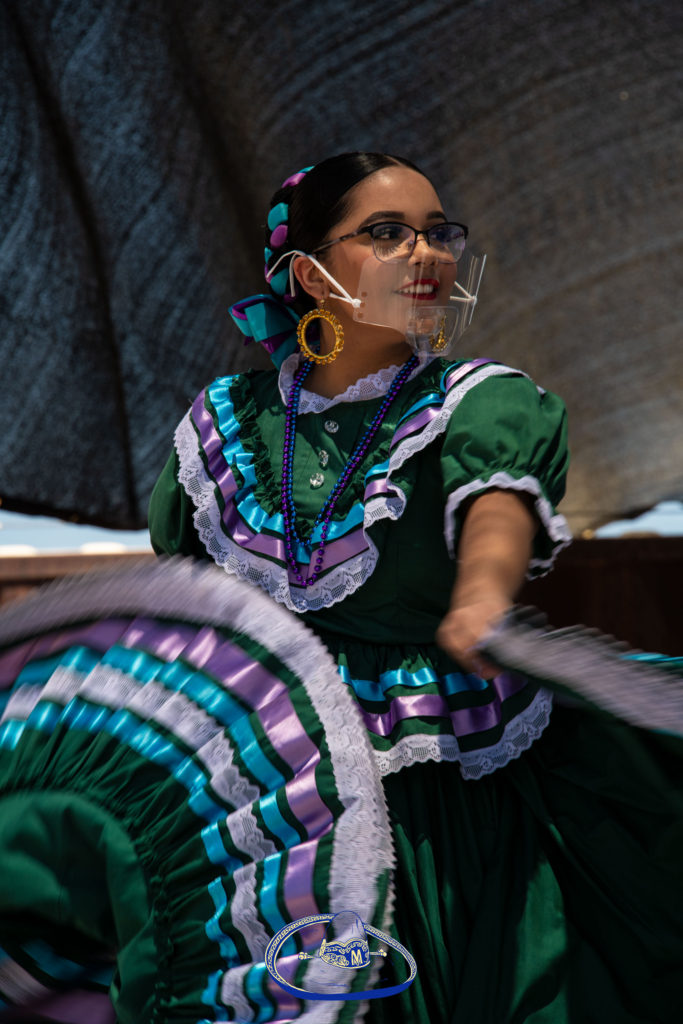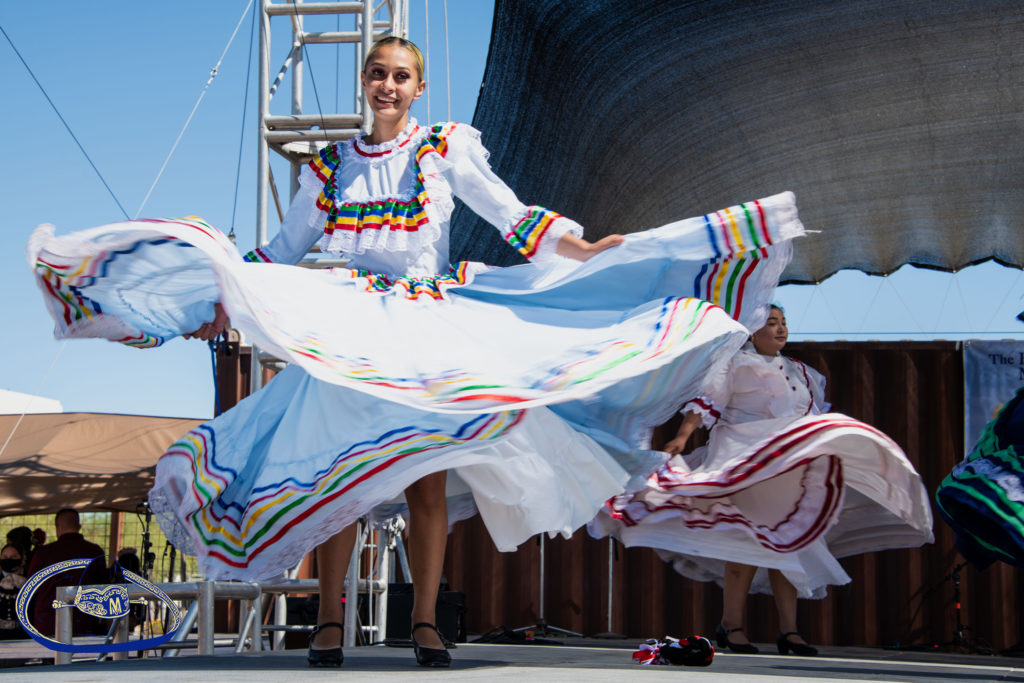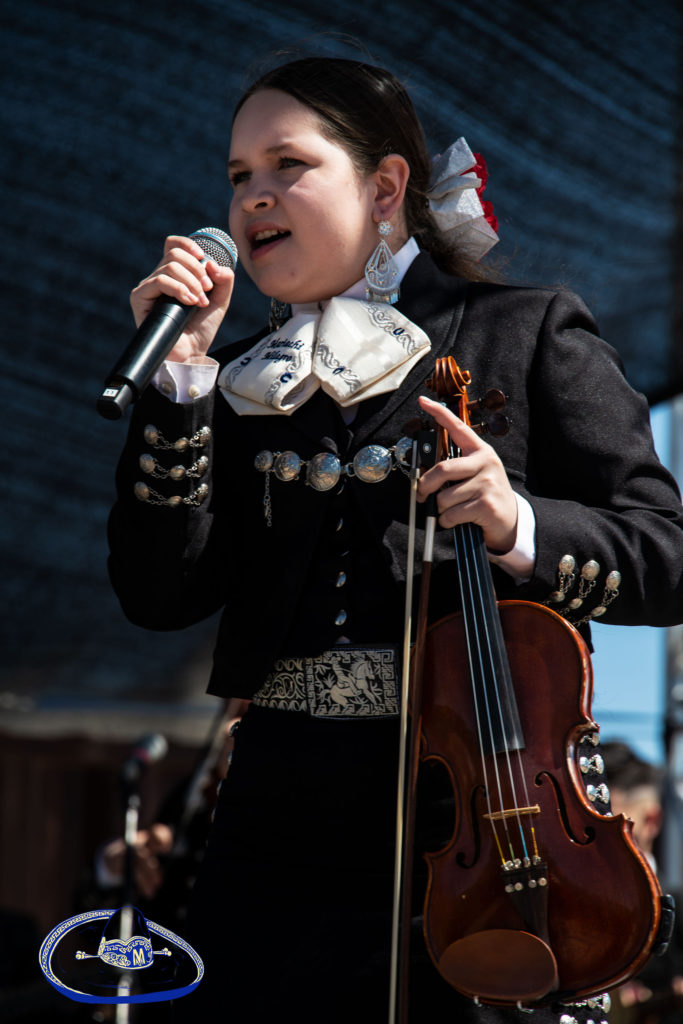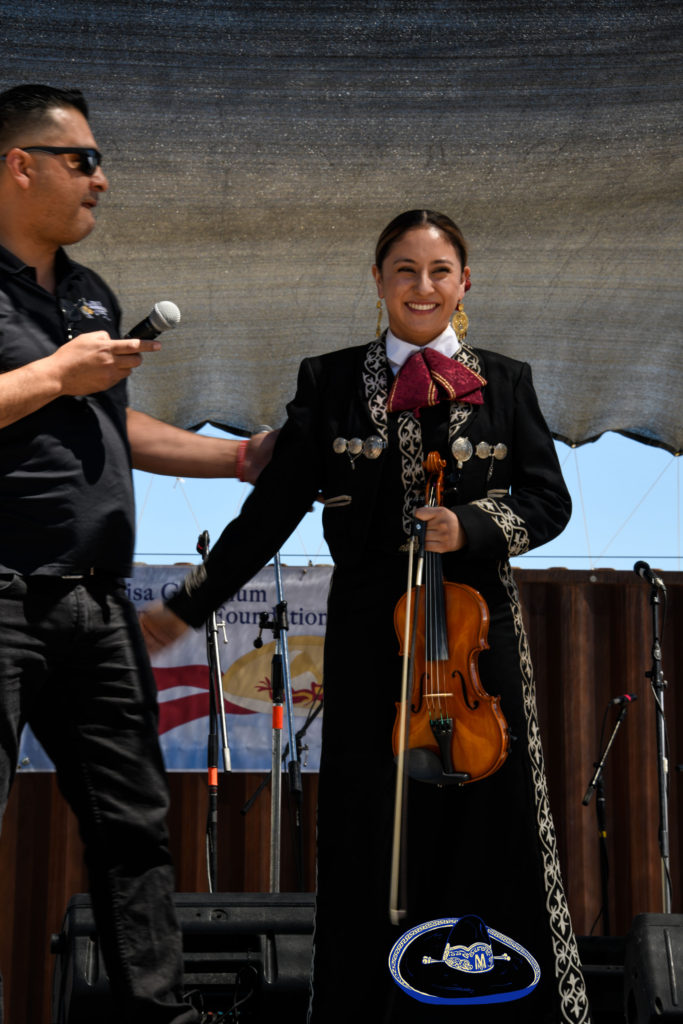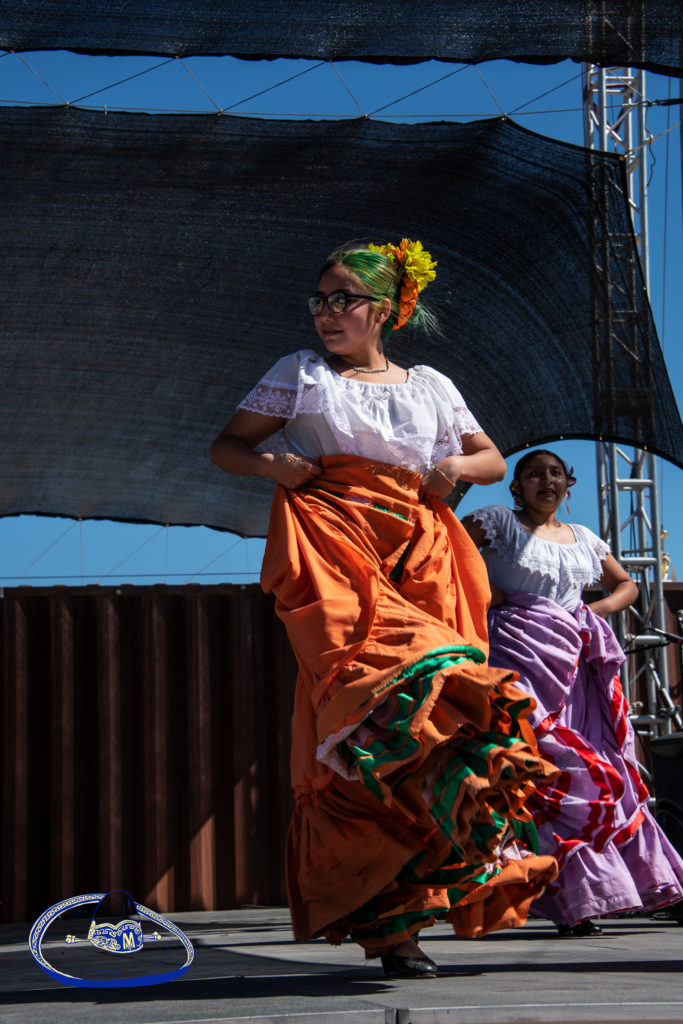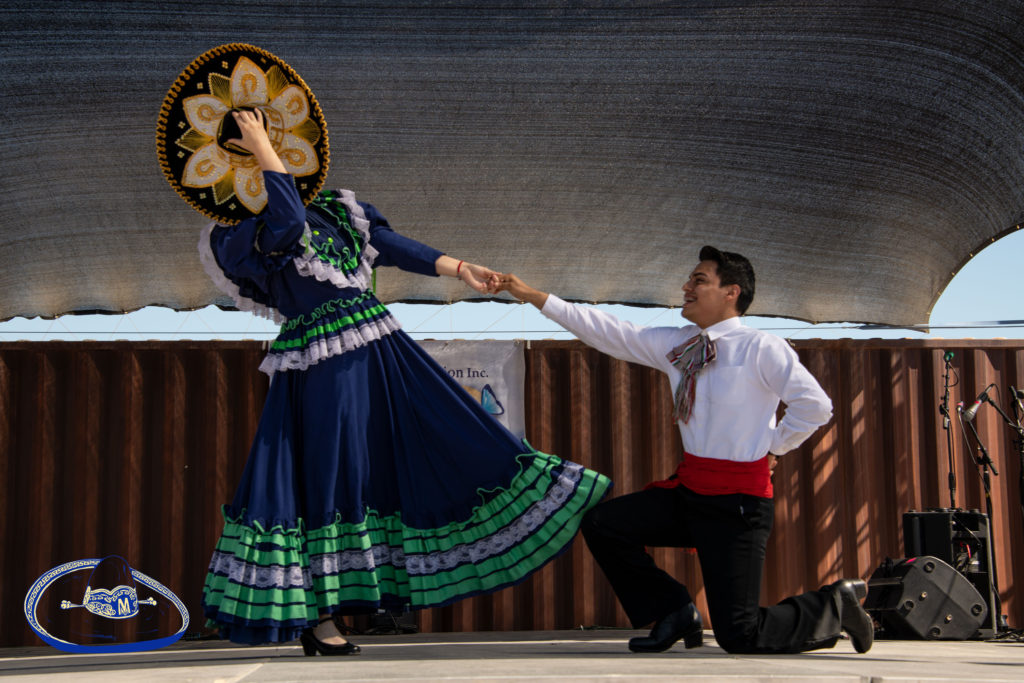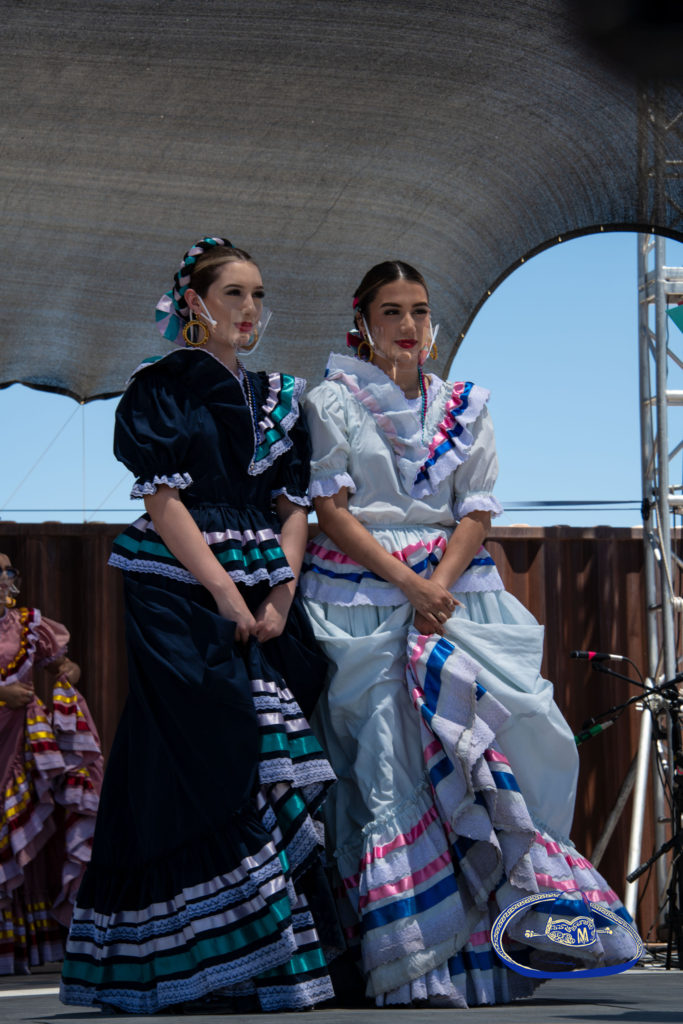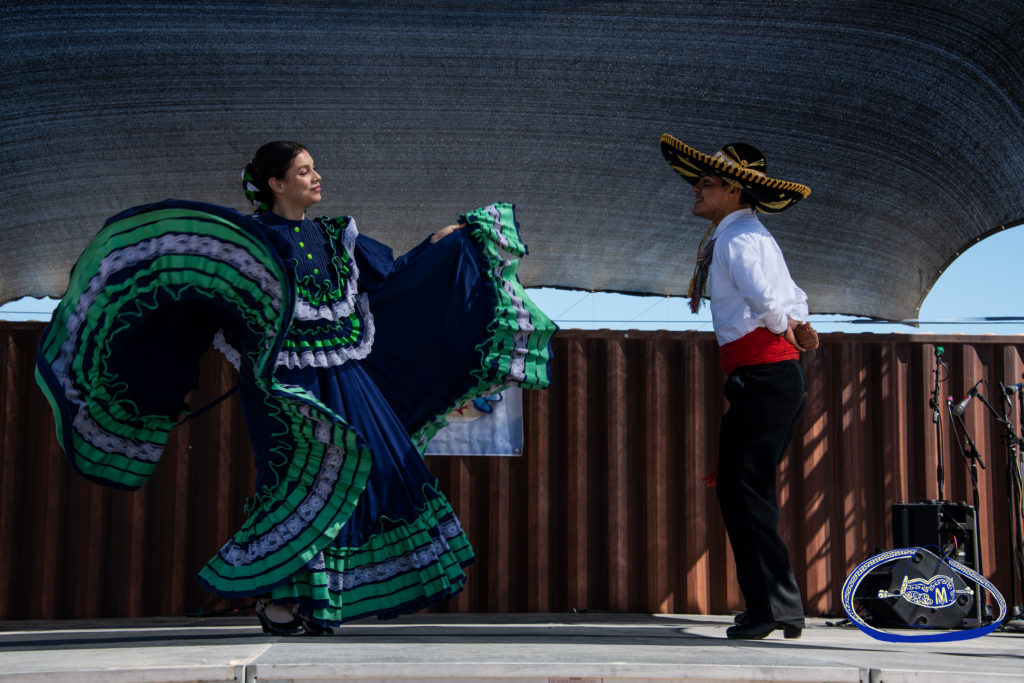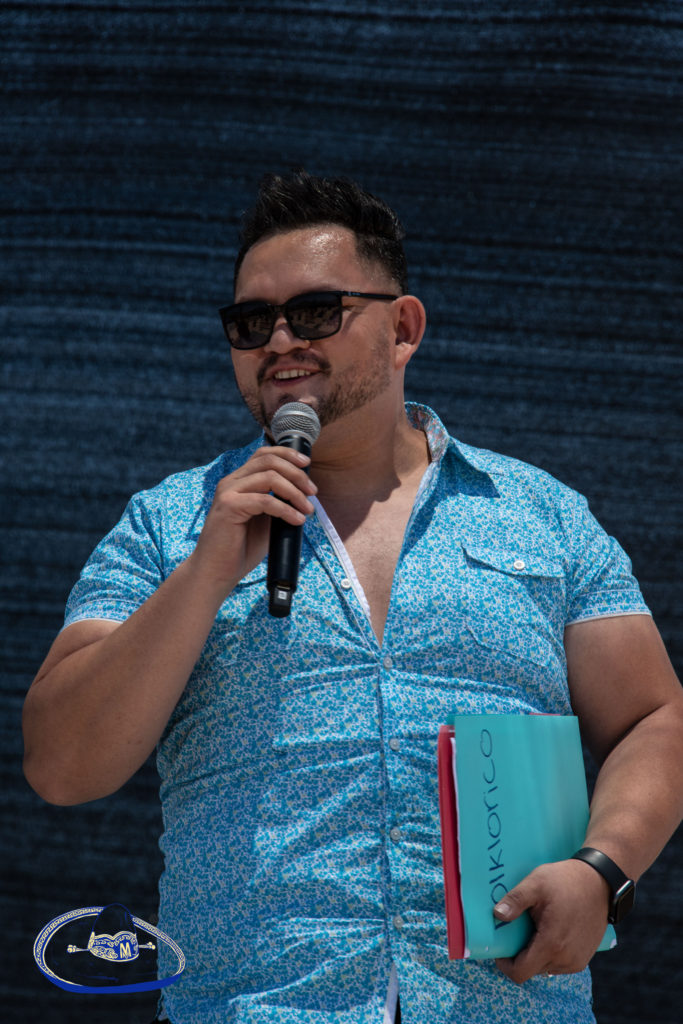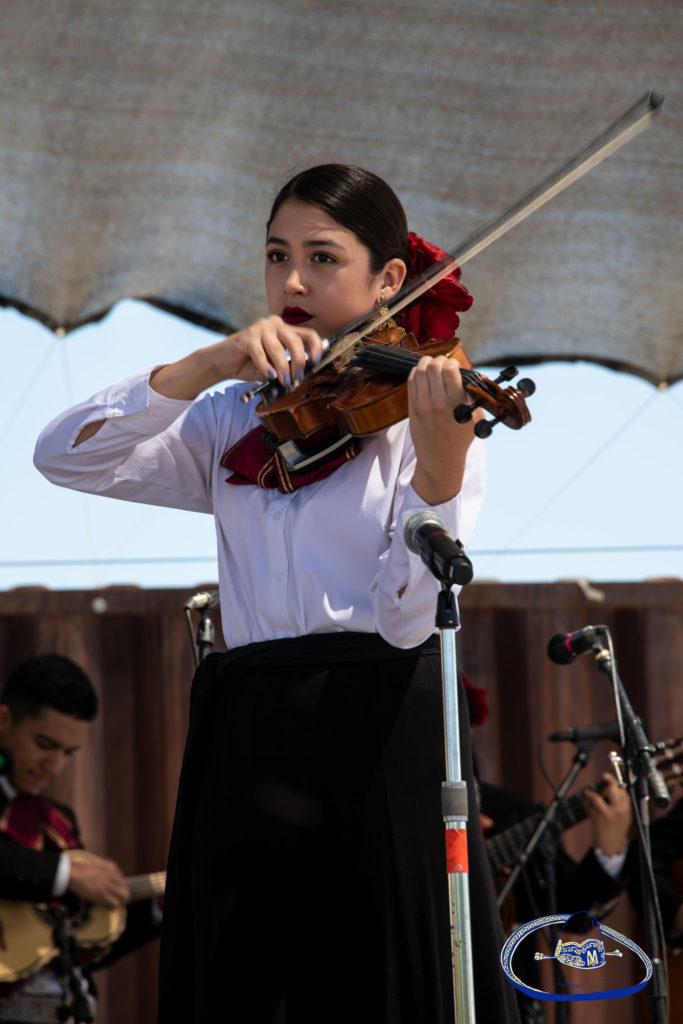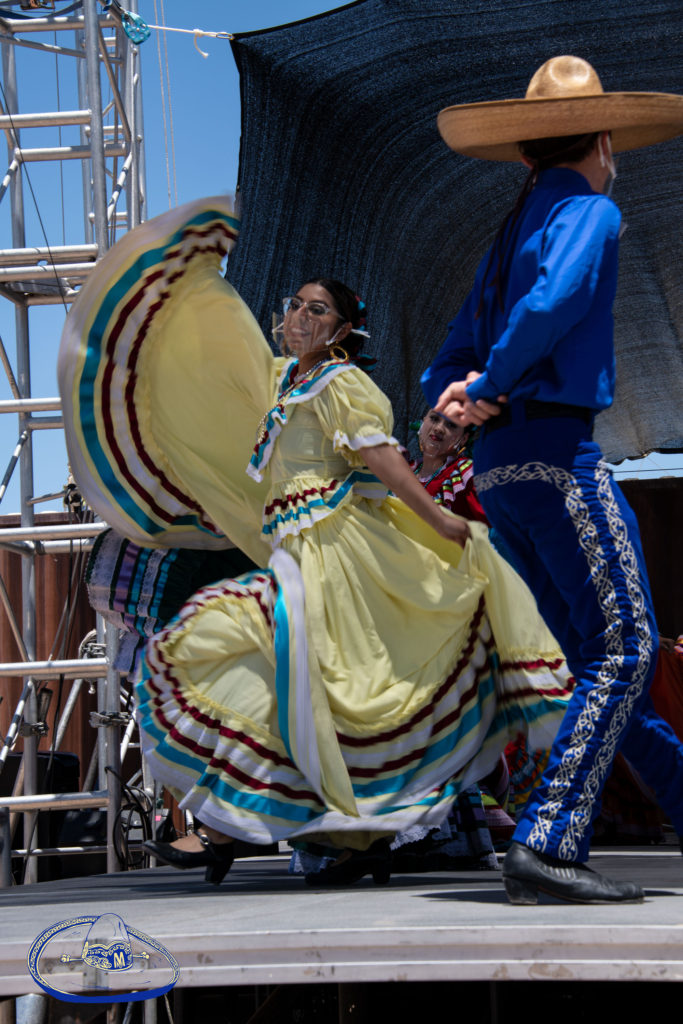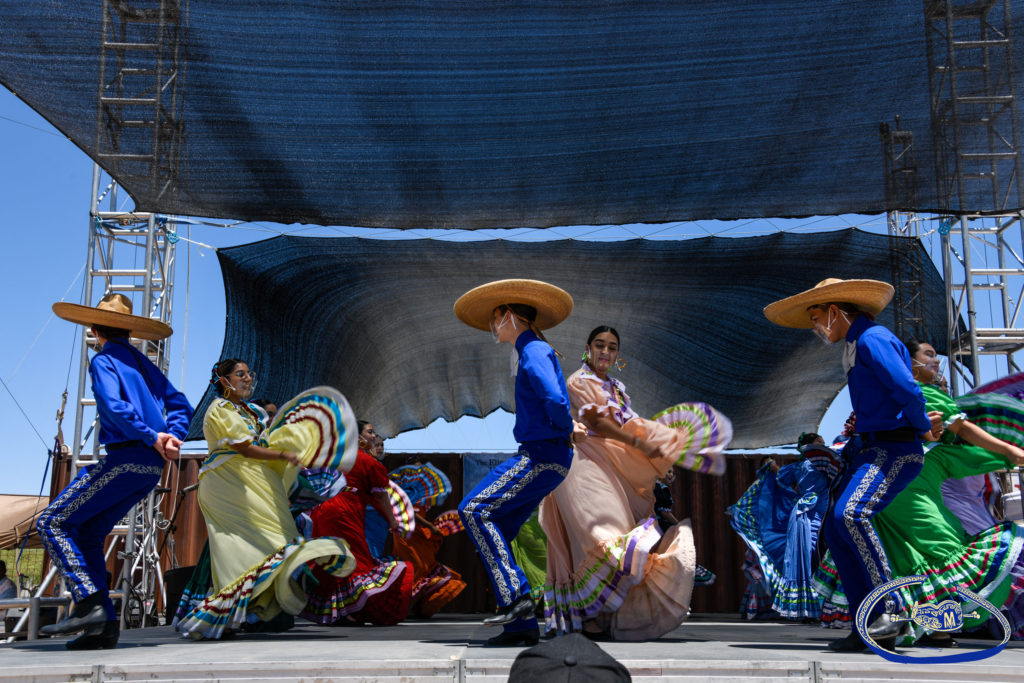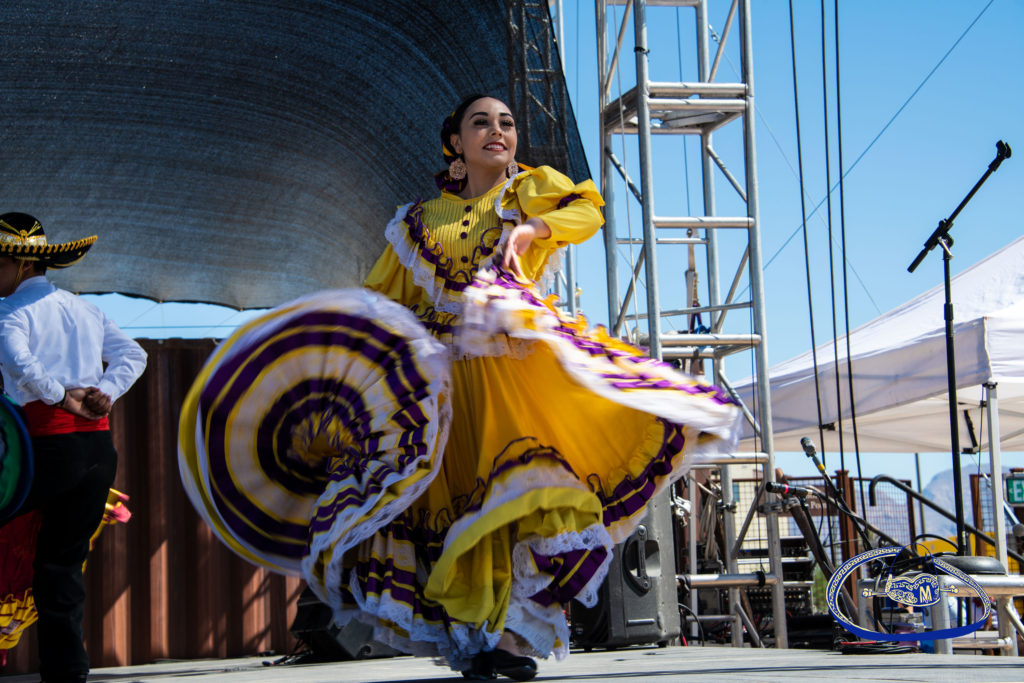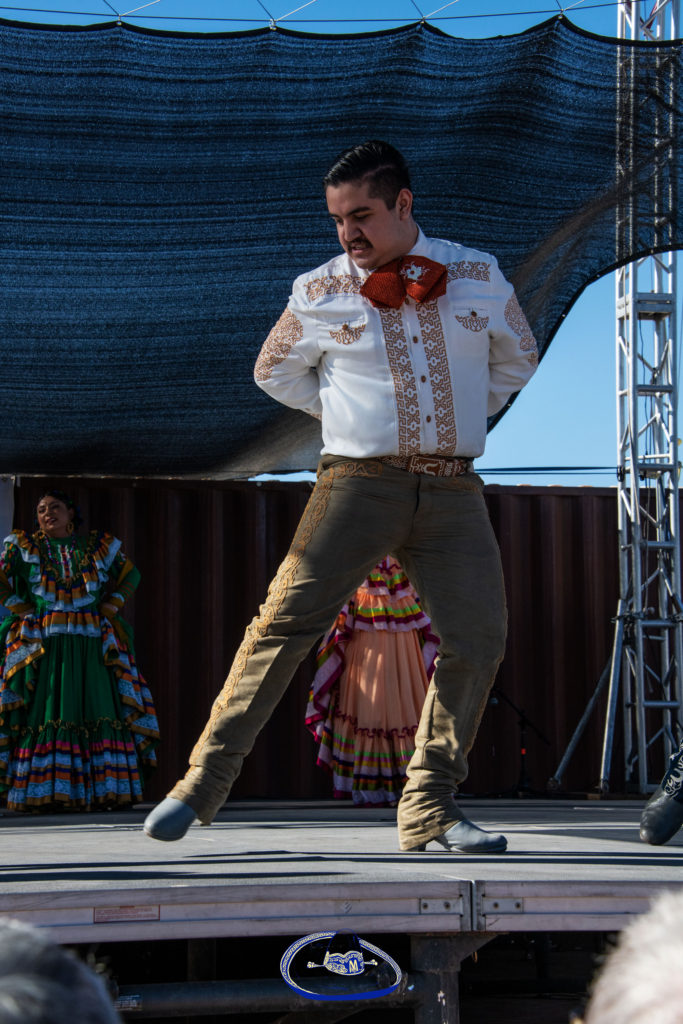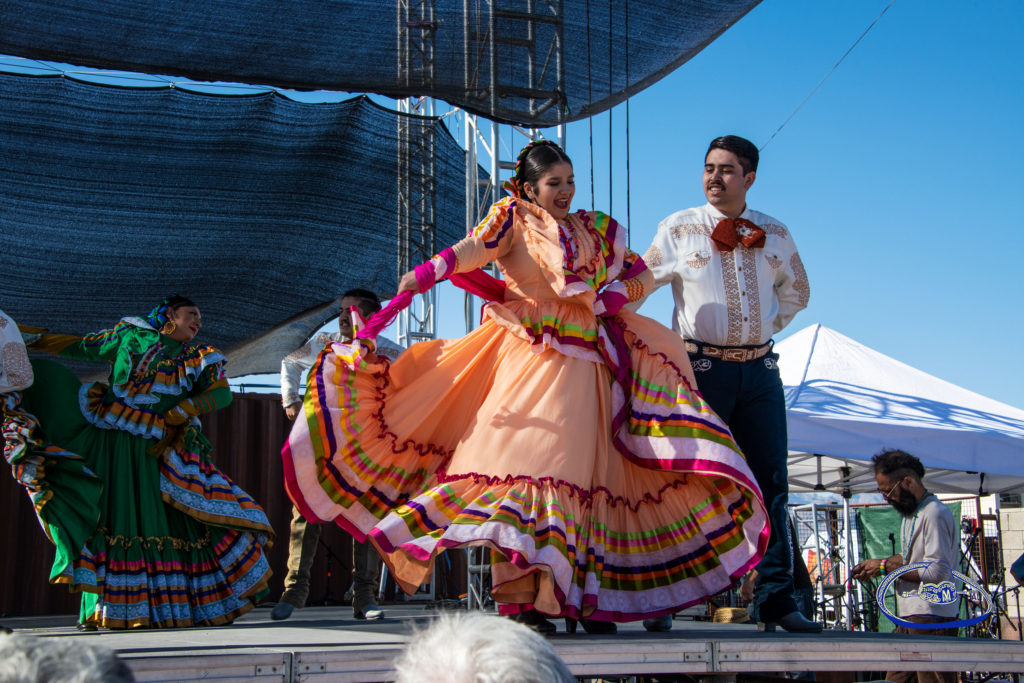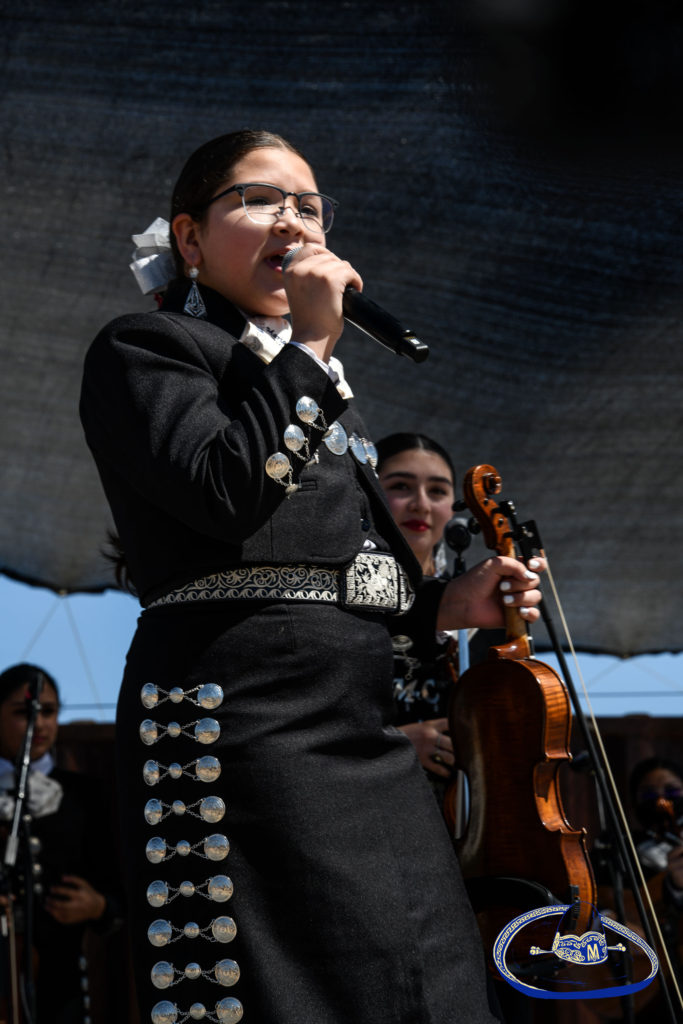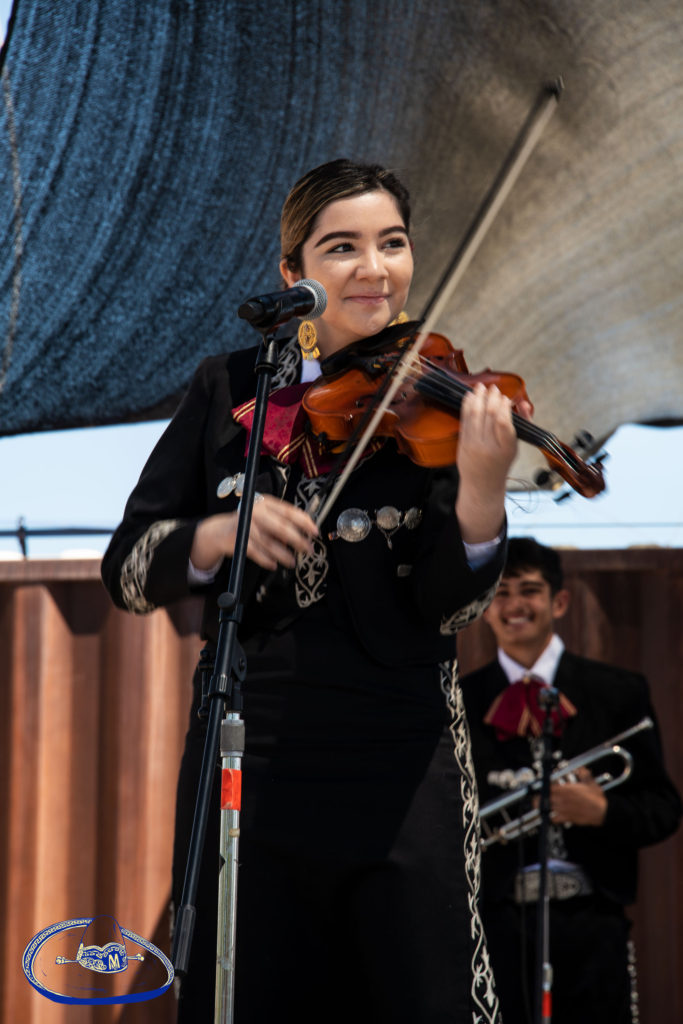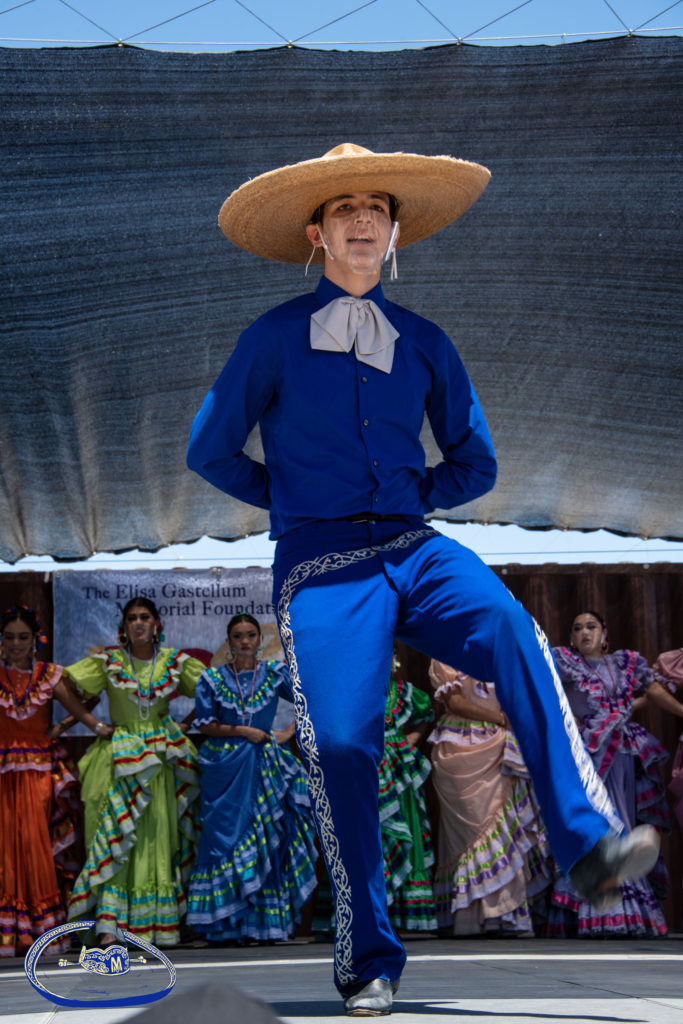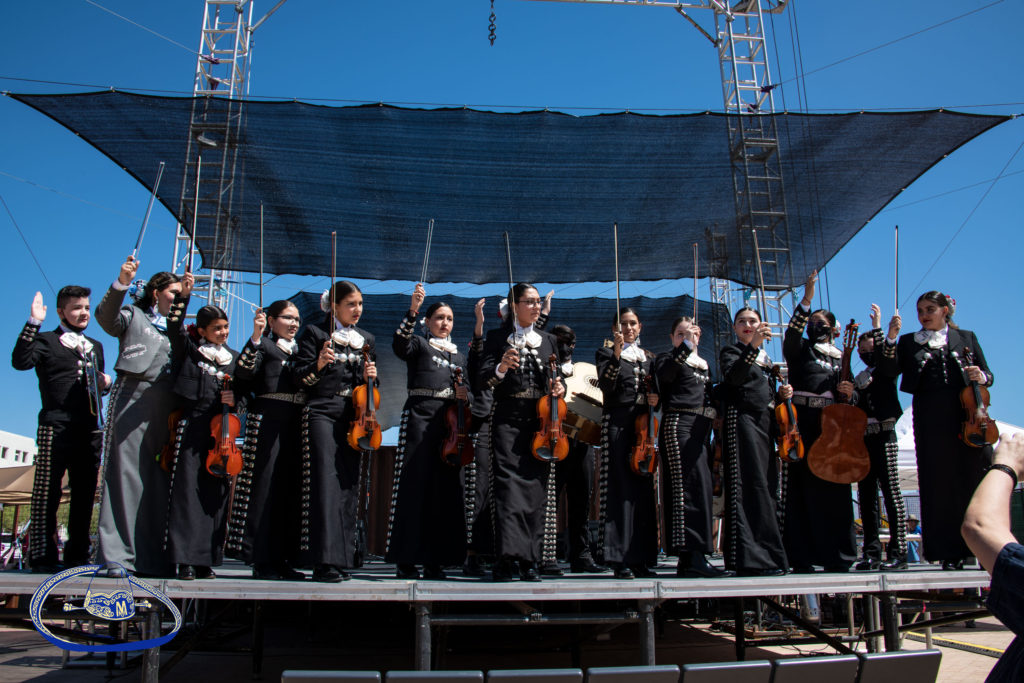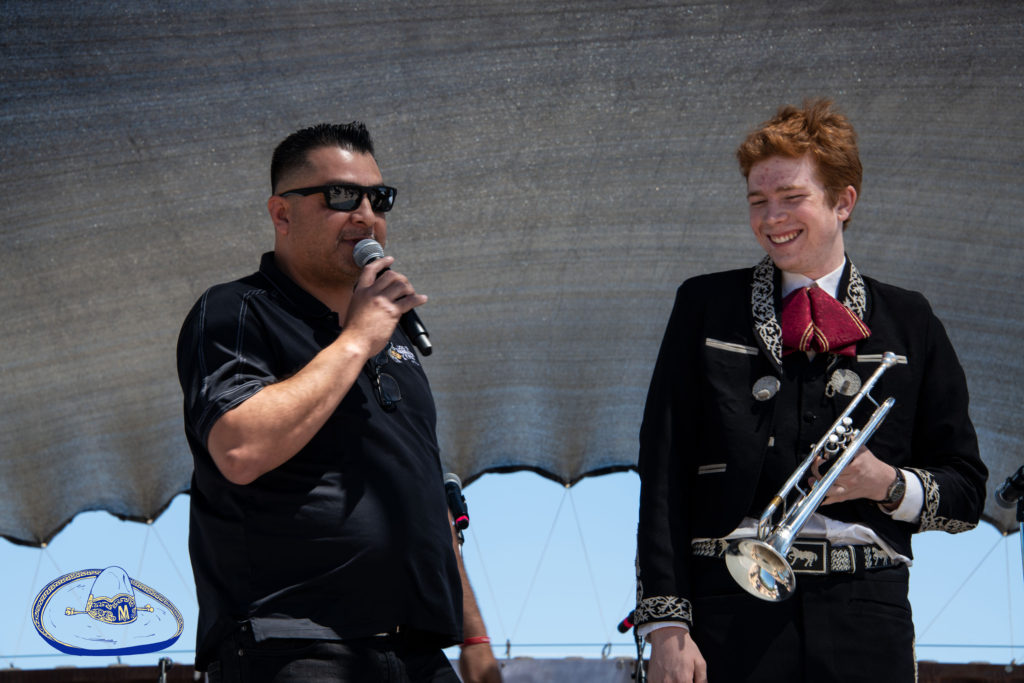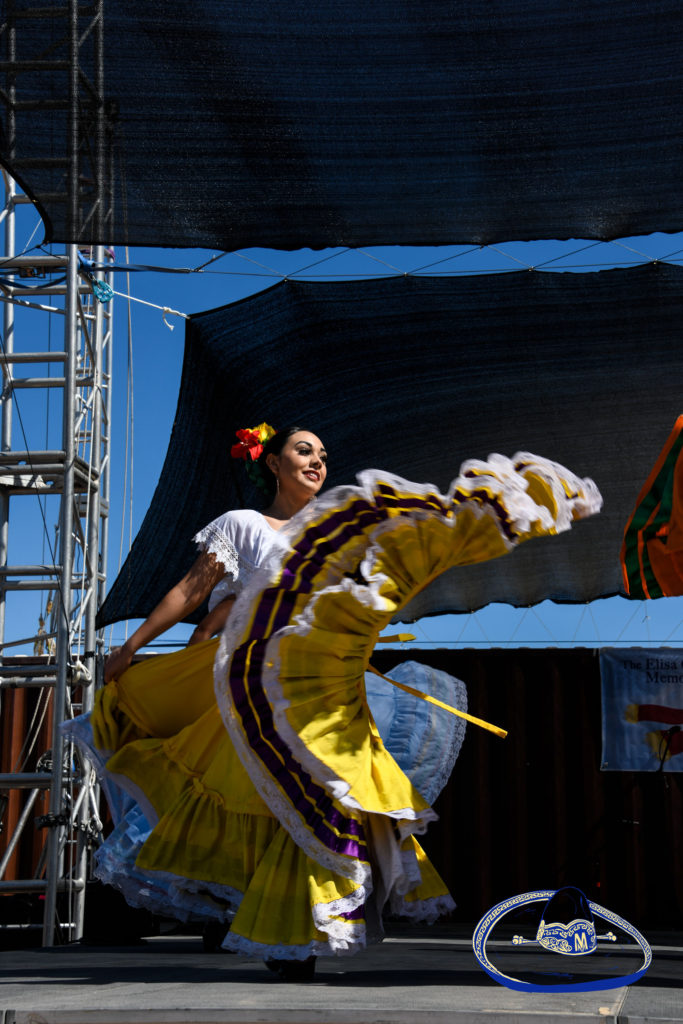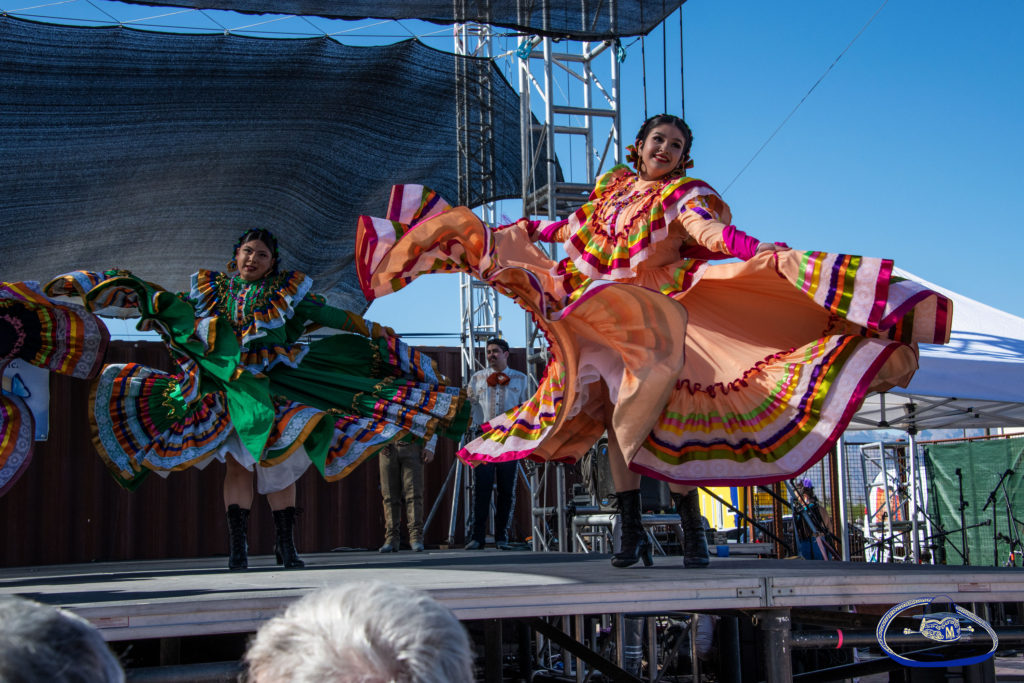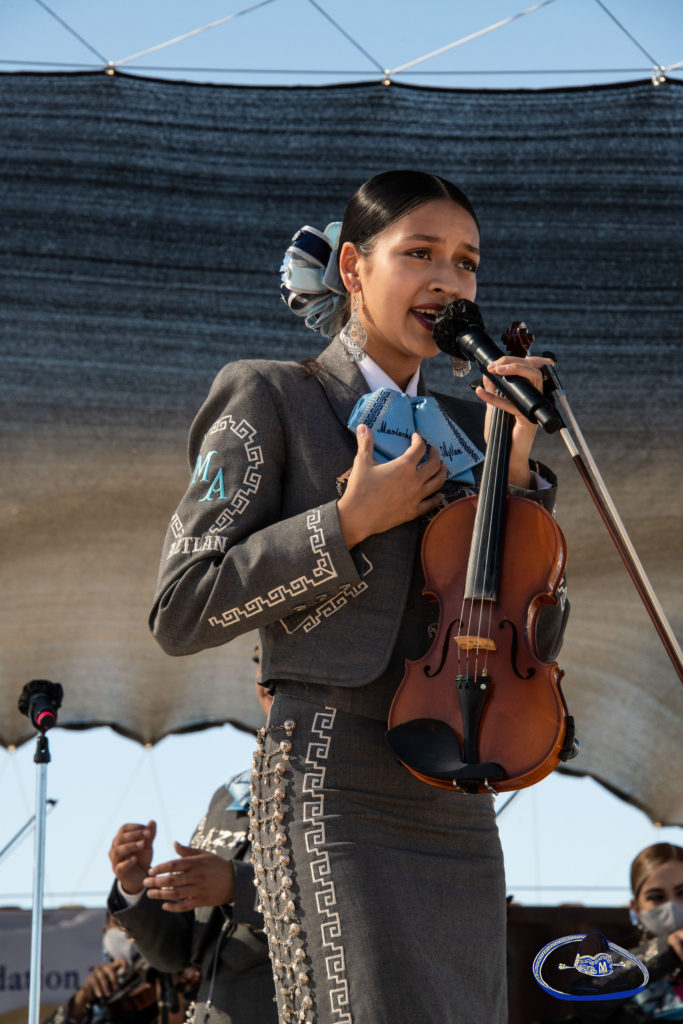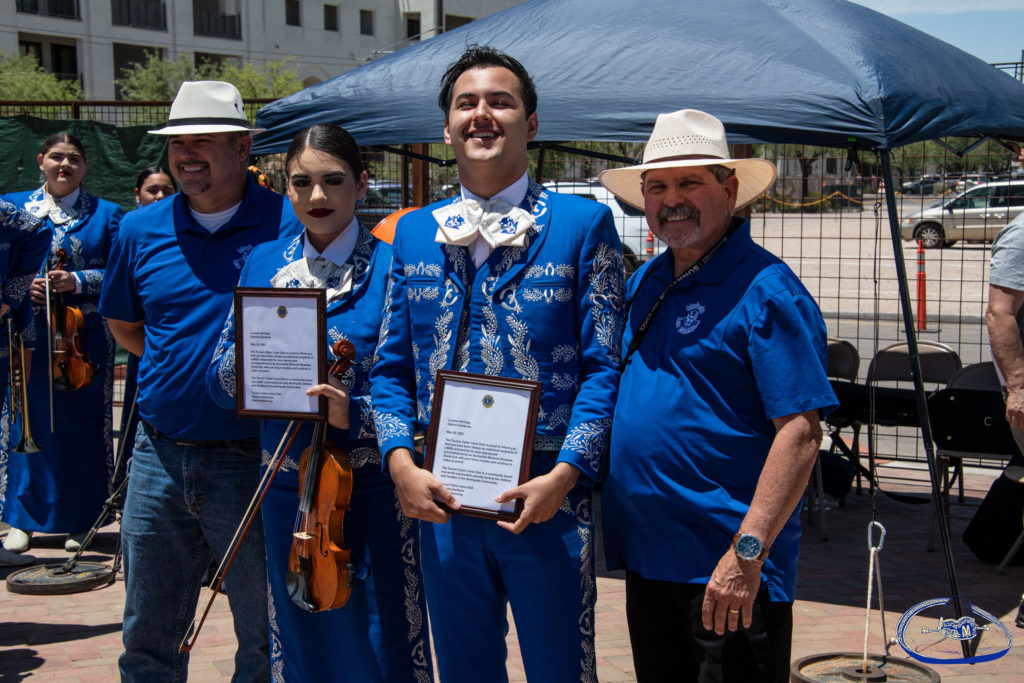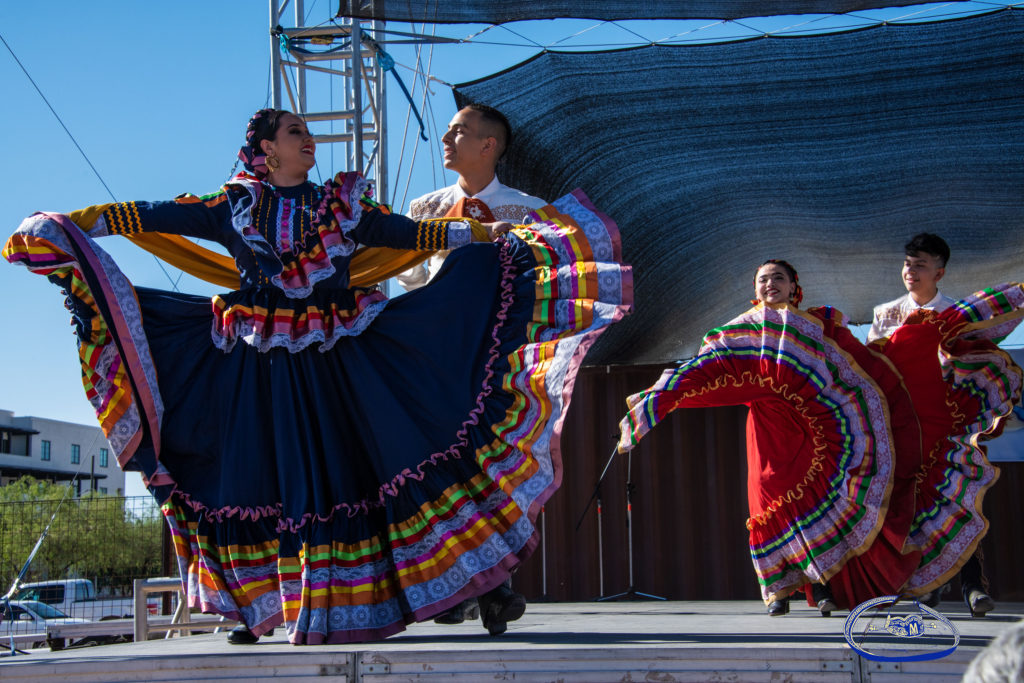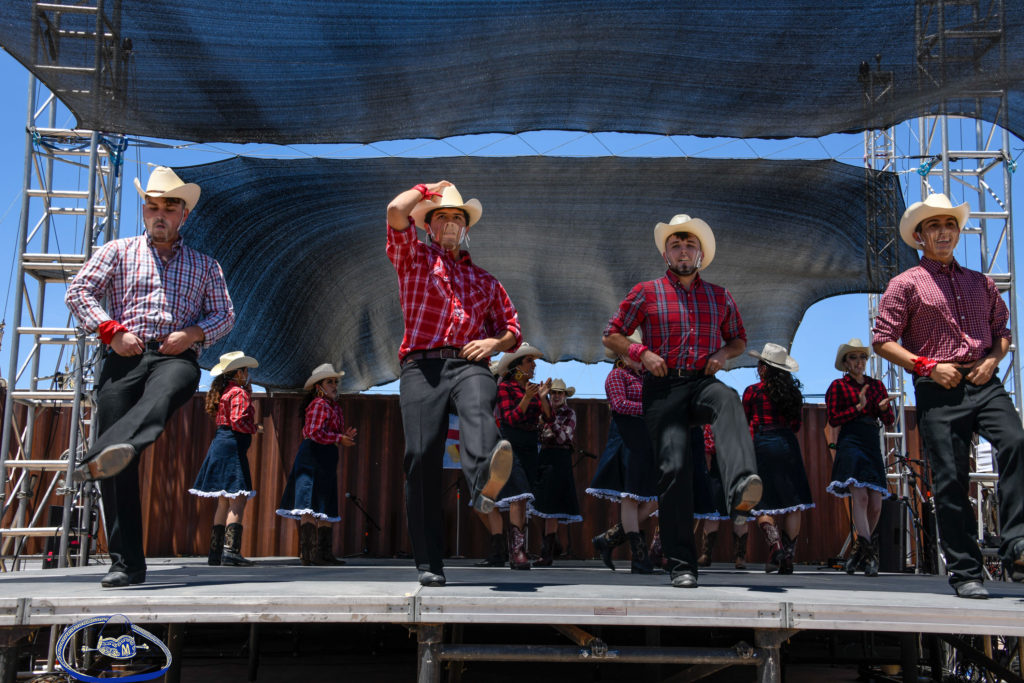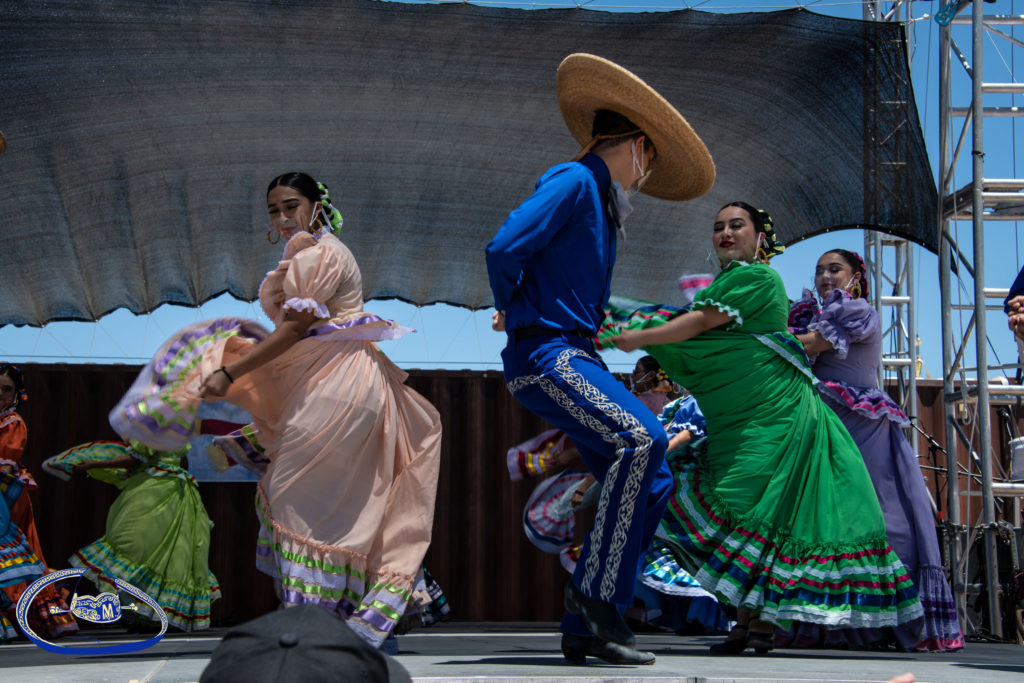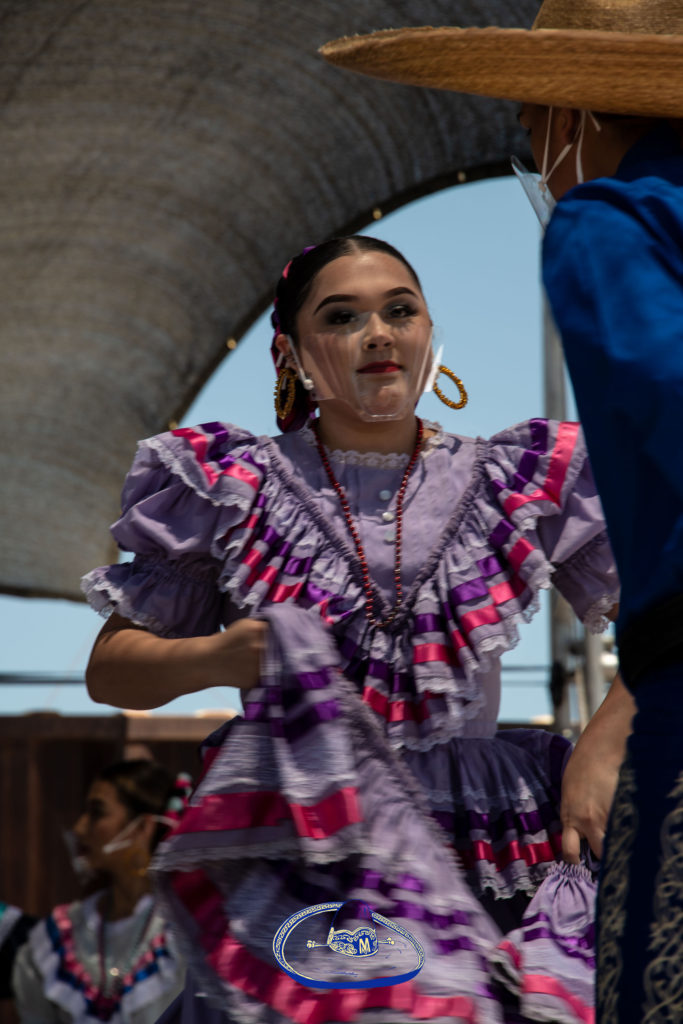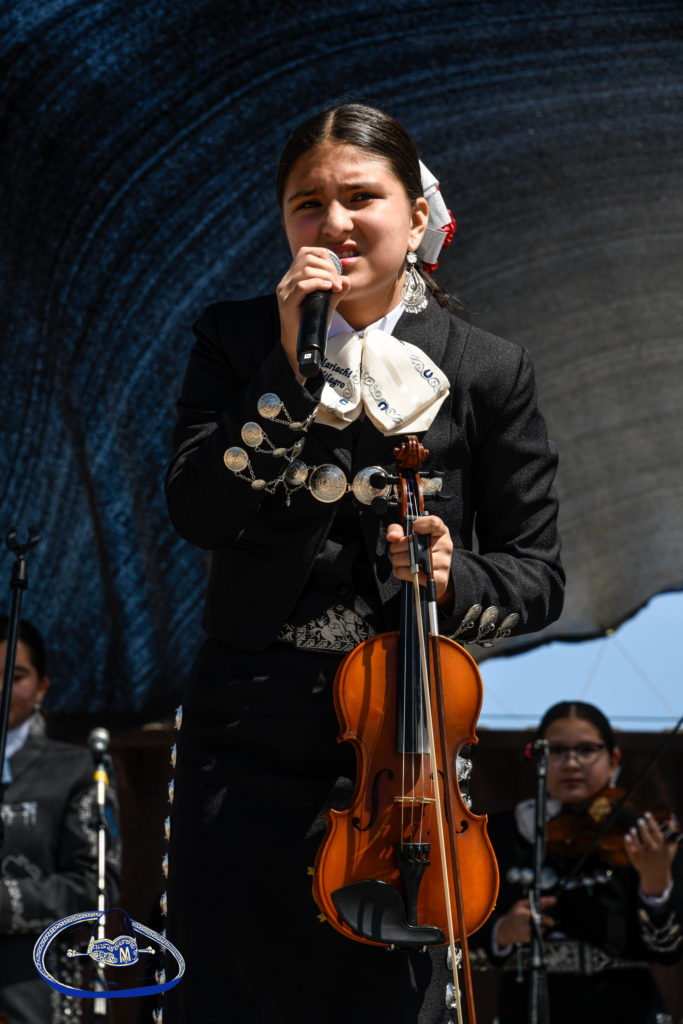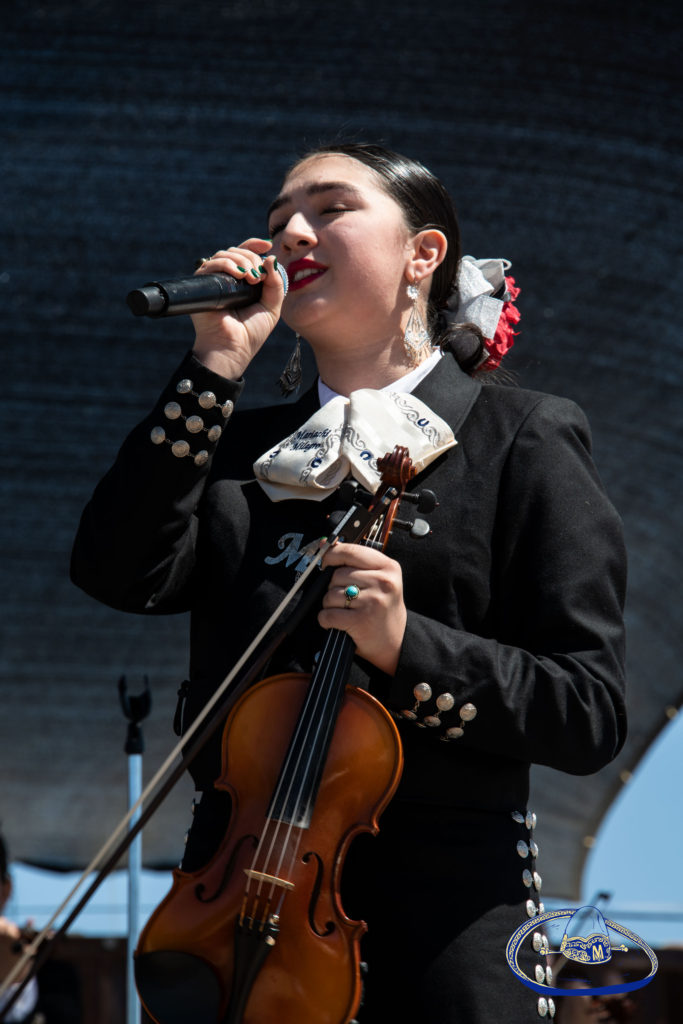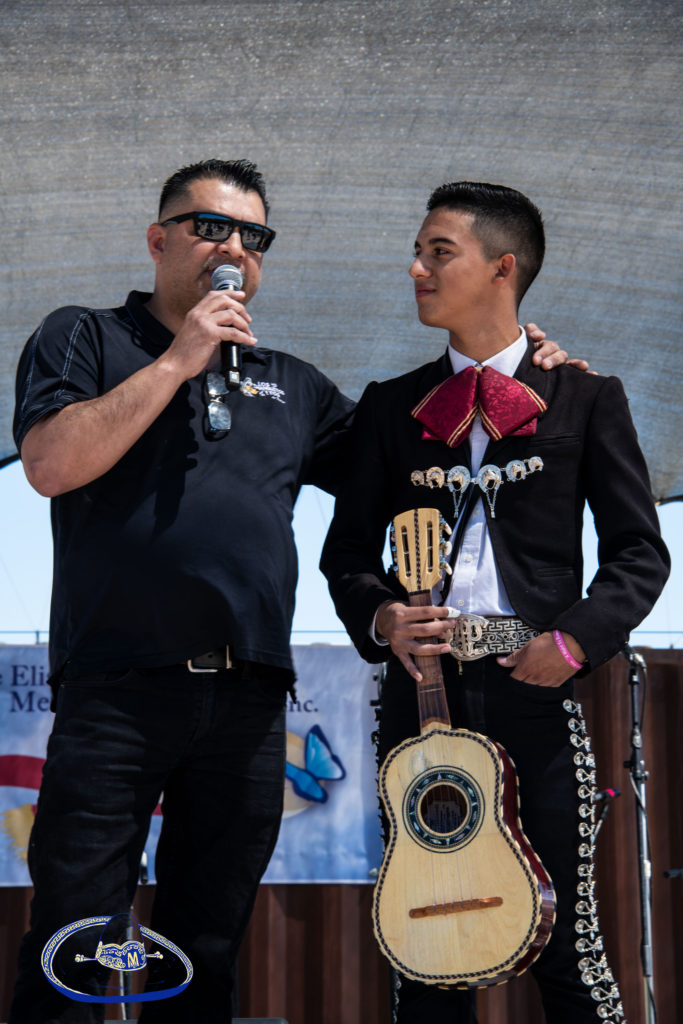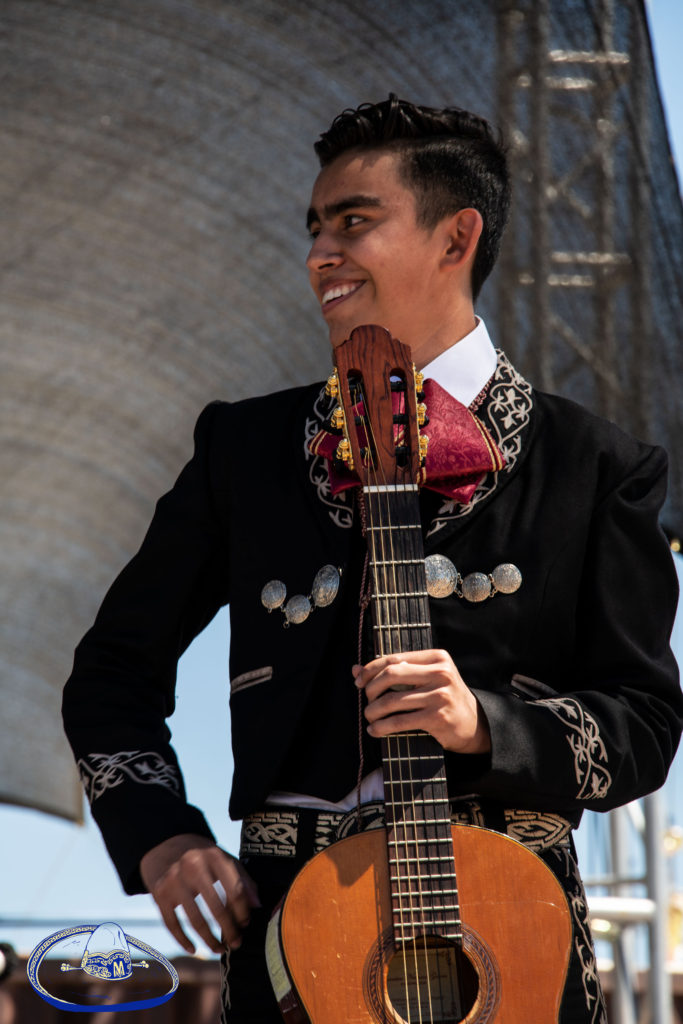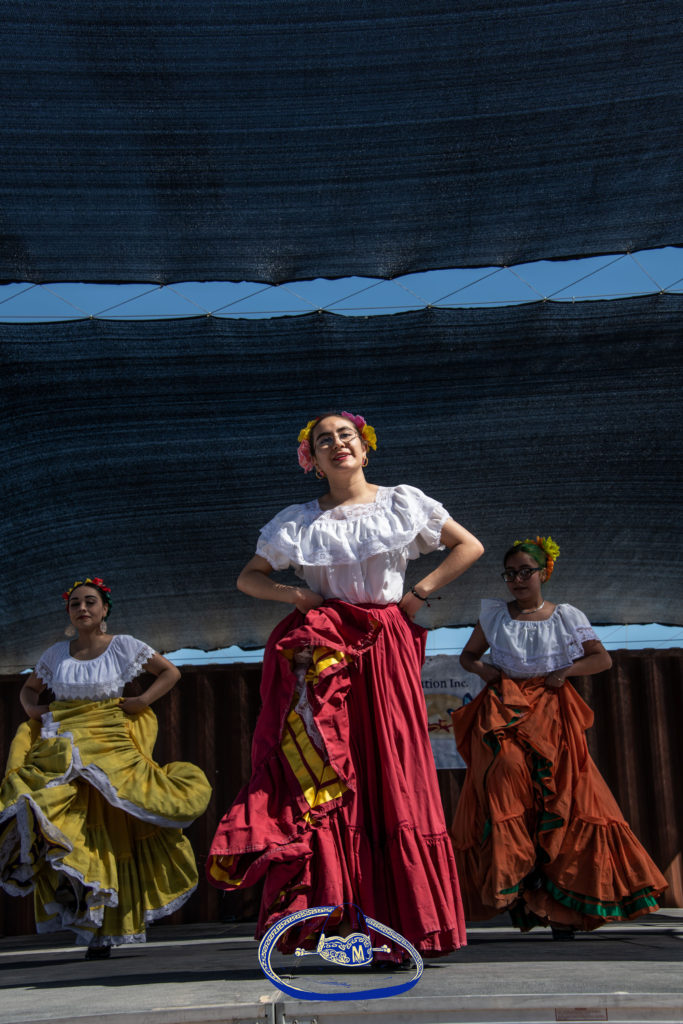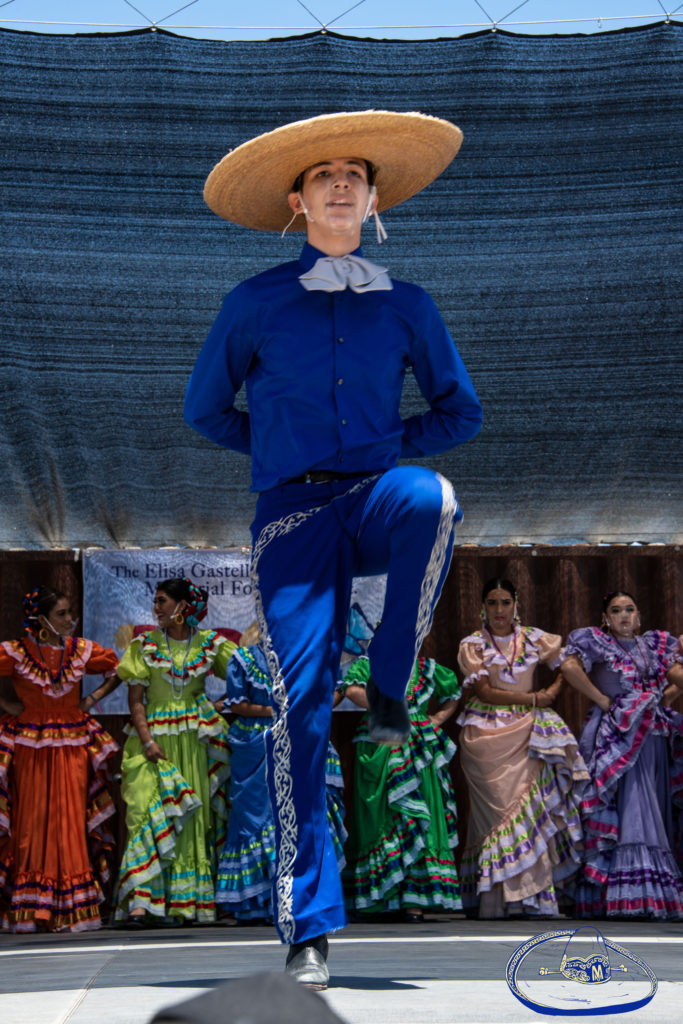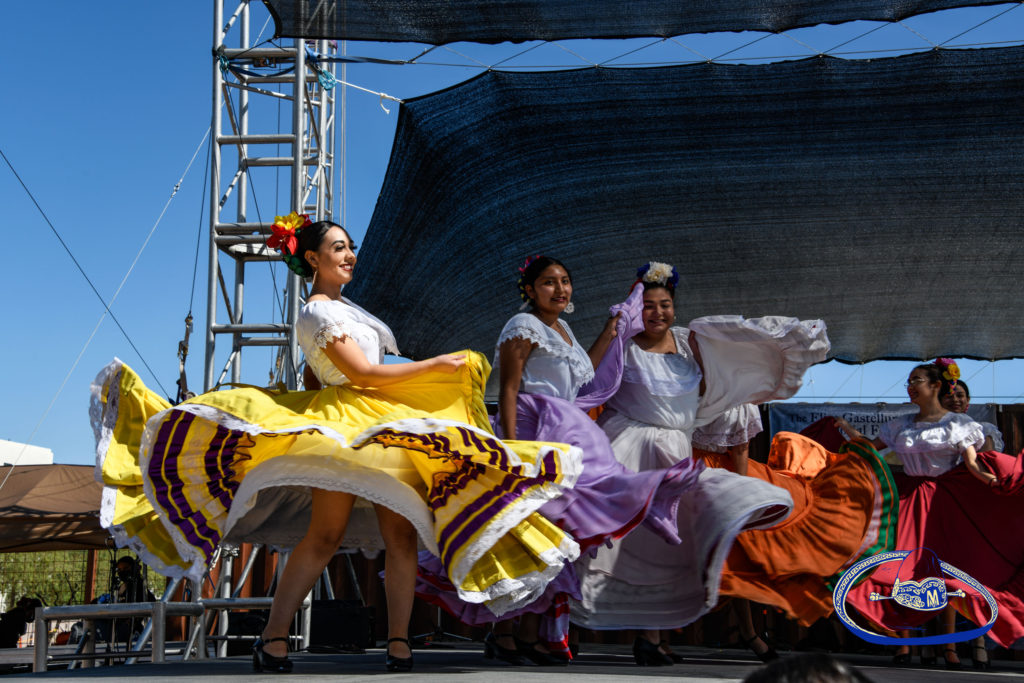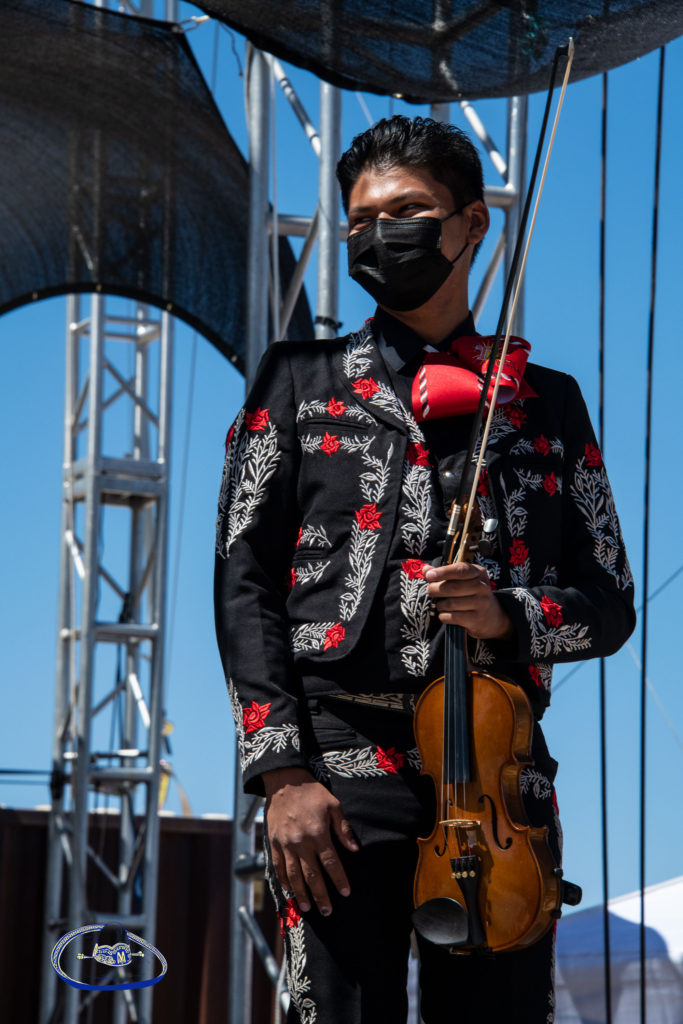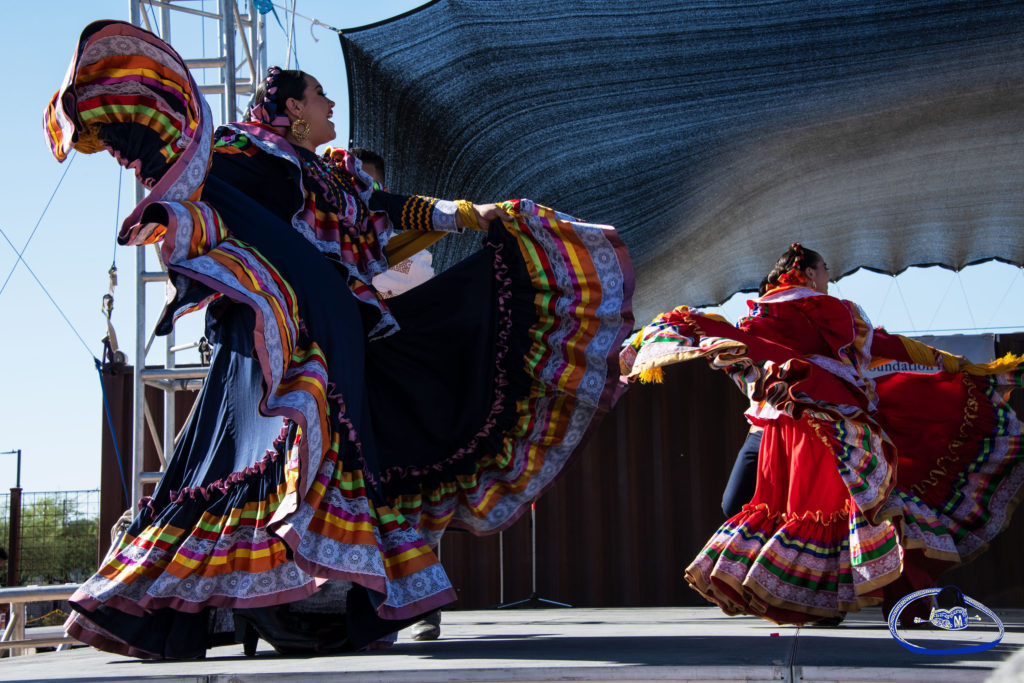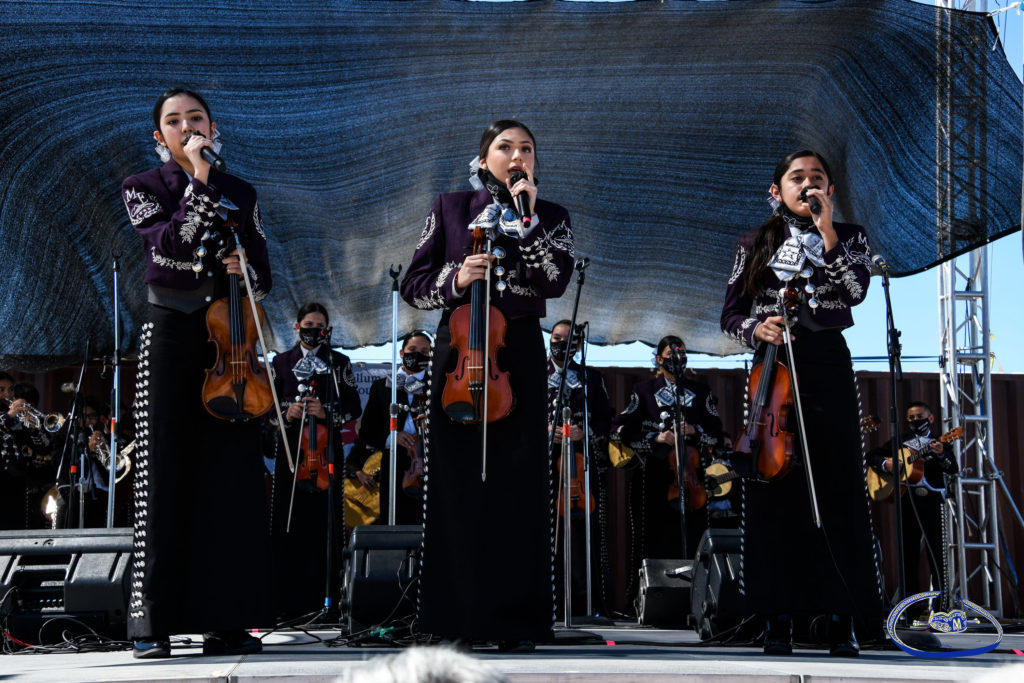When I was a music writer for the Tucsón Citizen I marveled at the student showcase of the Tucsón International Mariachi Conference (TIMC) each year.
(Click photo to enlarge)
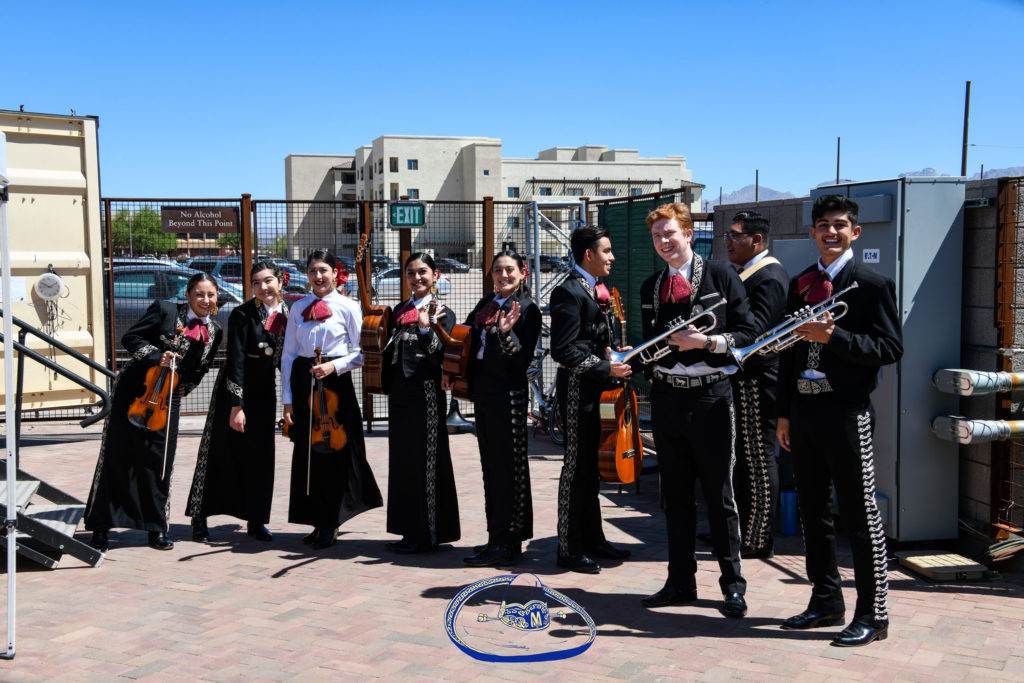
How could these young groups get better year after year?
How could seeing each other in action, along with the inspiration and guidance of the masters, lead to palpable improvements in both the quality of the music and dance, as well as the sheer showmanship of the various groups, every year?
But it did happen. Entering the student showcase each time I thought, “This has to plateau sometime.” But it never did.
Next year will be the 40th anniversary of TIMC, after two “quiet” years due to the COVID-19 pandemic.
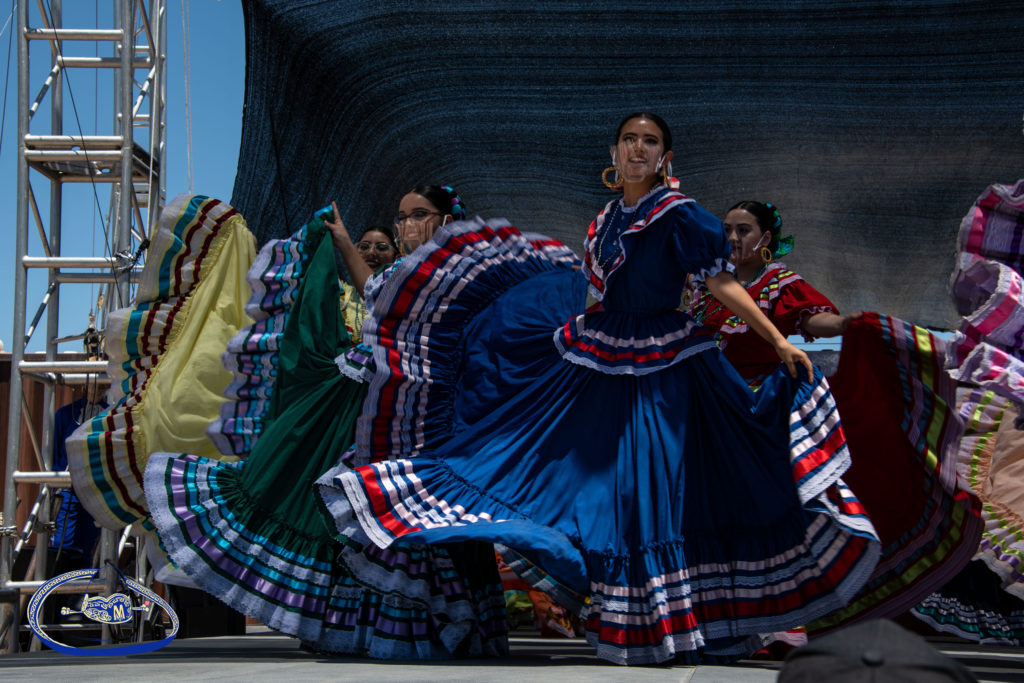
In May the conference held a much smaller, more controlled version of the Tucson International Mariachi Conference’ Participant Showcase, as the student showcase came to be known.
Social distancing protocols were rigidly adhered to. The event was held outdoors at the Mercado San Augustin Annex stage, and audience members were only family members and close friends. You had to sign up for tickets. It was not open to the general public.
But the event was put in place out of a sense that the students – particularly graduating seniors – deserved the opportunity to demonstrate their skills on stage and gather in their groups one last time to celebrate the culture with family and friends.
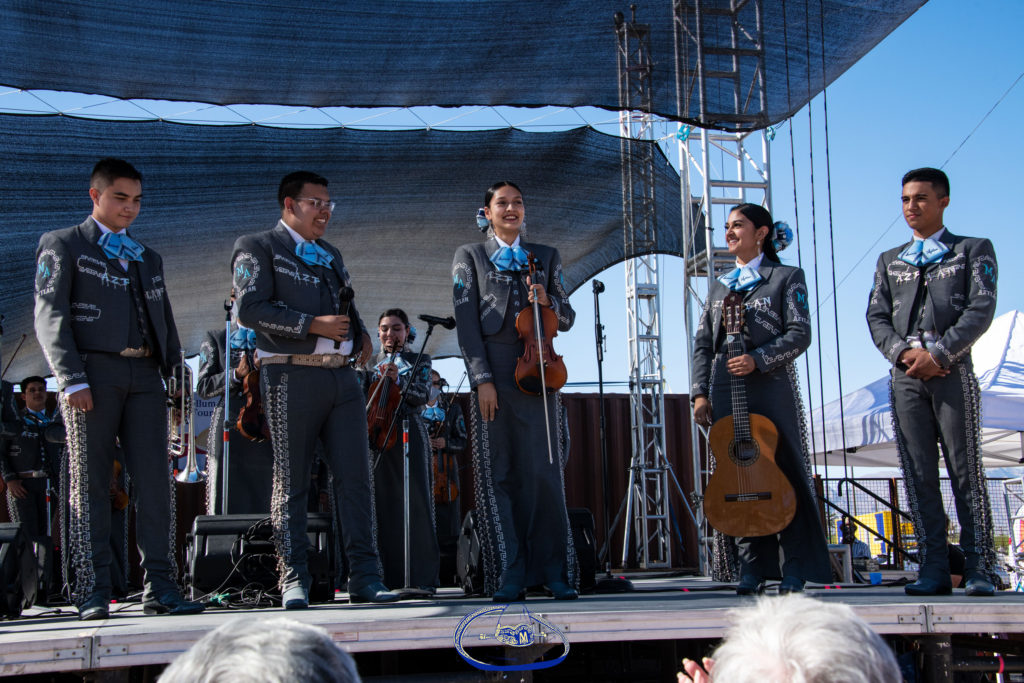
No one knew as the small event was planned that restrictions would largely be lifted for those already vaccinated in the days leading up to the show, anymore than they could know that the day would produce practically gale force winds.
Personally I was concerned. Not for the safety of the crowd but what impact the pandemic would have on the performers.
How could groups that had such limited opportunity over the course of the school year to get together and practice hope to present much of any kind of cogent show of prowess? Would Zoom rehearsals be enough to tighten up the loose ends?
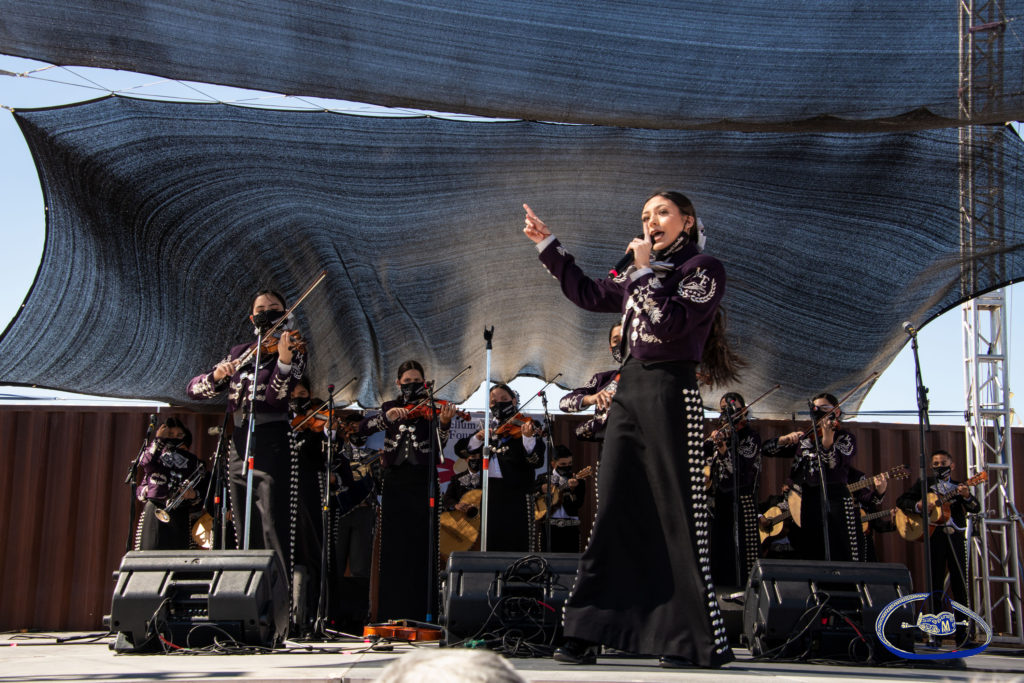
I was forgetting something very important. COVID had produced a solid year-plus of extreme disruption in our schools and across society. It had shut down schools as we knew it, abruptly halted air travel, commerce and altered daily life as no other event in my 67 years had.
But the skills these young men and women had accumulated were a hell of a lot more than any single year. Most of them had been playing and dancing since elementary school. Some of these young men and women had clearly taken the time in isolation as an opportunity to work on their chops and hone their skills even further. And clearly most if not all found escape, solace and joy in the opportunity, fleeting as it was, to play, sing and dance together again.
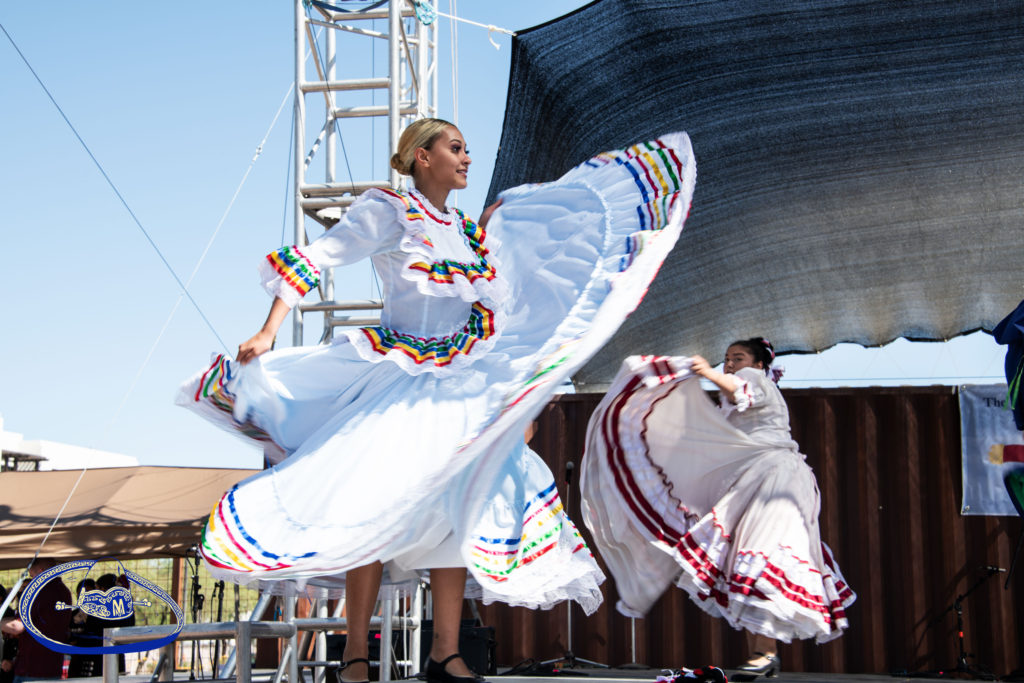
Their dedication and discipline had not dissipated in the disruption for these students, nor had it for their teachers. COVID was just another challenge – a big one. A matter of life and death, as a matter off fact. Relatives and friends would be lost to the disease. But the music and dance would continue. Culture always persists. If anything, a challenge makes people cling to their culture even more.
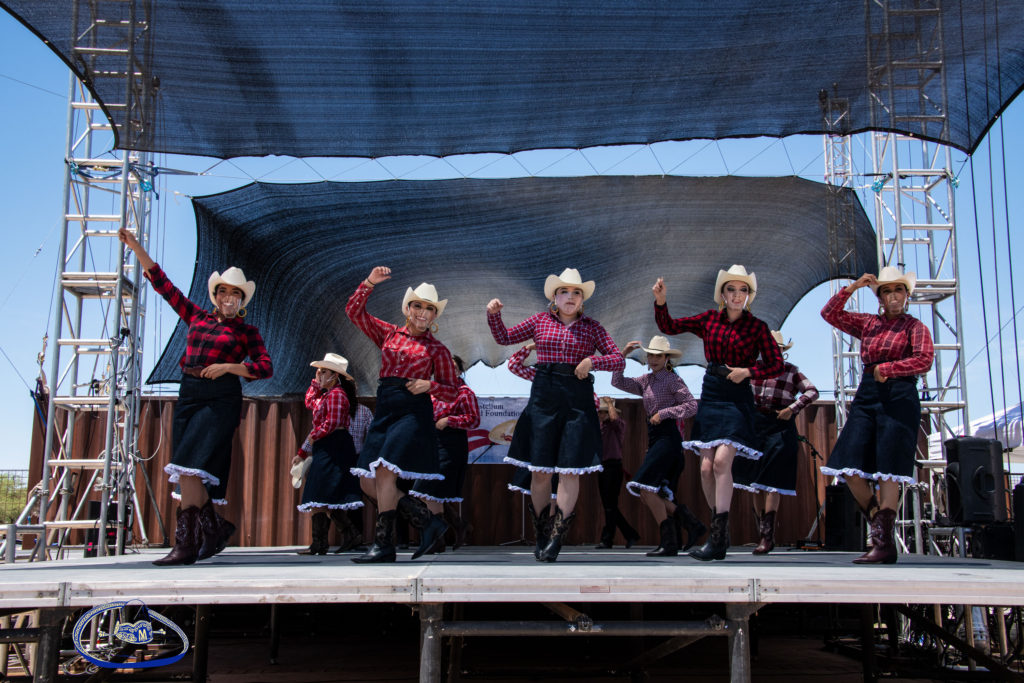
The classroom studies would continue too, along with the dream of pursuing goals beyond in higher education, the military, etc. These students shared a commitment and a bond that could weather trials of a plague the likes of which had not been seen in a century.
These kids were going places, come hell or high water.
And so from nine a.m. to five p.m. that day I found myself more and more assured that nothing substantial had slipped away. The drive and the passion was still there. The quality of the music and dance was far from cratered. There may have been some small blemishes evidenced in the short sets but the big chunks were solidly in place.

Upon reflection I should not have been surprised. The youth mariachi and folklorico movement begun with Tucson’s Mariachi Los Changuitos Feos in 1964 was very much alive and thriving. Parents were proud and the students were loving seeing each other and performing together again. Skirts whirled and the floor was rhythmically pounded again by the dancers, while the mariachis played with passion and skill.
Before each set began the directors of the groups called their seniors to come forward and talk about what their plans for the future were. So many lofty goals put forth with so many already accepted at top schools around the state and the nation. COVID was a hiccup to an unstoppable educational movement.
Mayor Regina Romero – herself a mariachi mom, as well as Tucson’s first Latina mayor – was on hand and she and TIMC board president Alfonso Dancil spoke of next year when the conference would again return to the Tucson Convention Center downtown. They thanked the Pacua Yaqui tribe, which had in a very real sense saved the conference from going under when costs became too high to do the event in the city. For five years the tribe’s Casino Del Sol became the destination for the conference thanks to its generous support of the music and dance.
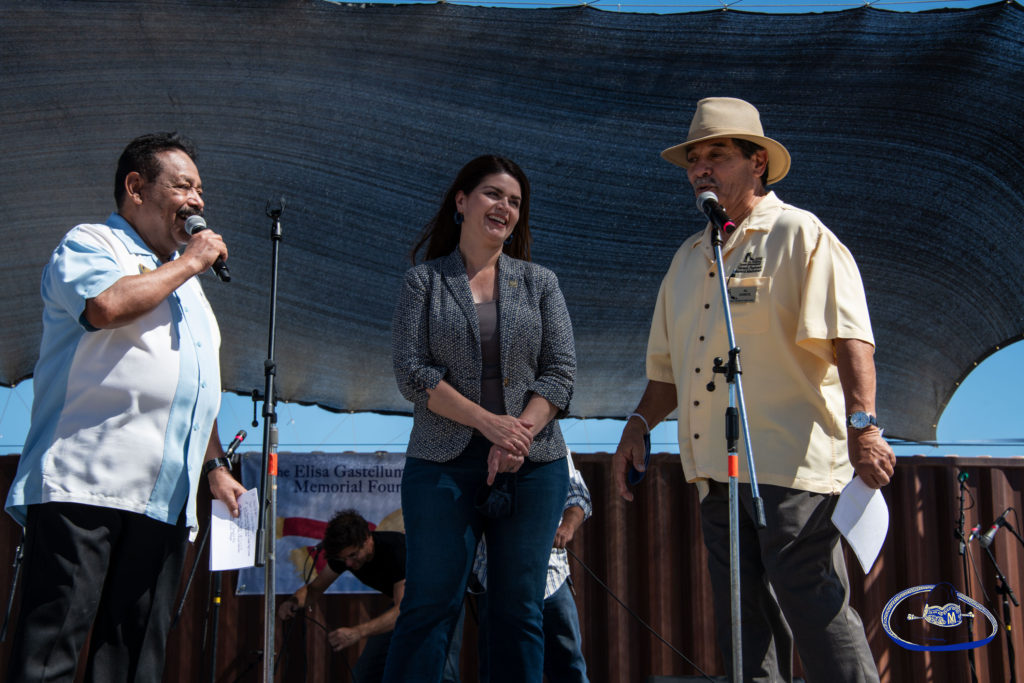
But it is time to get back to the heart of the city where it all began. This cultural expression is a big part of who we are as Tucsonans. The sounds of youth mariachis and the visual spectacle of the myriad regional dances is so much more than just arts for kids. It is a powerful symbol of our community’s resilience and optimism about the future. It is the embodiment of our multicultural strength. It binds us as one as we more forward to face whatever challenges might come our way with generation after generation of young people equipped with the organizational and critical thinking skills to move beyond present obstacles to a better future. Masks are coming off, and gloves too.
Tucson is ready to move forward again, even as the next generation of young mariachis heads out into the world.
(Click photo to enlarge)

